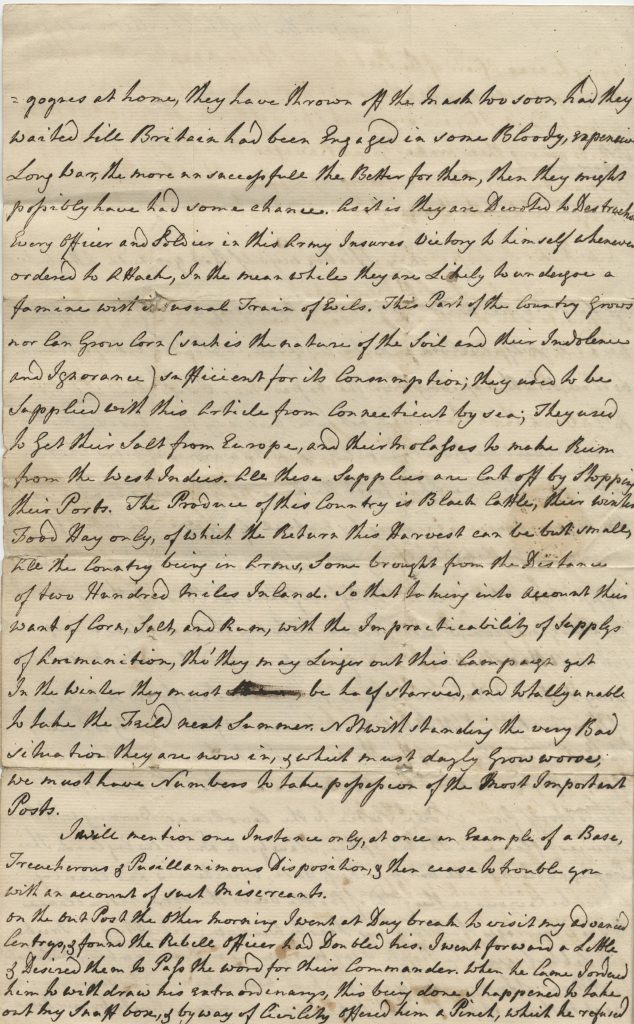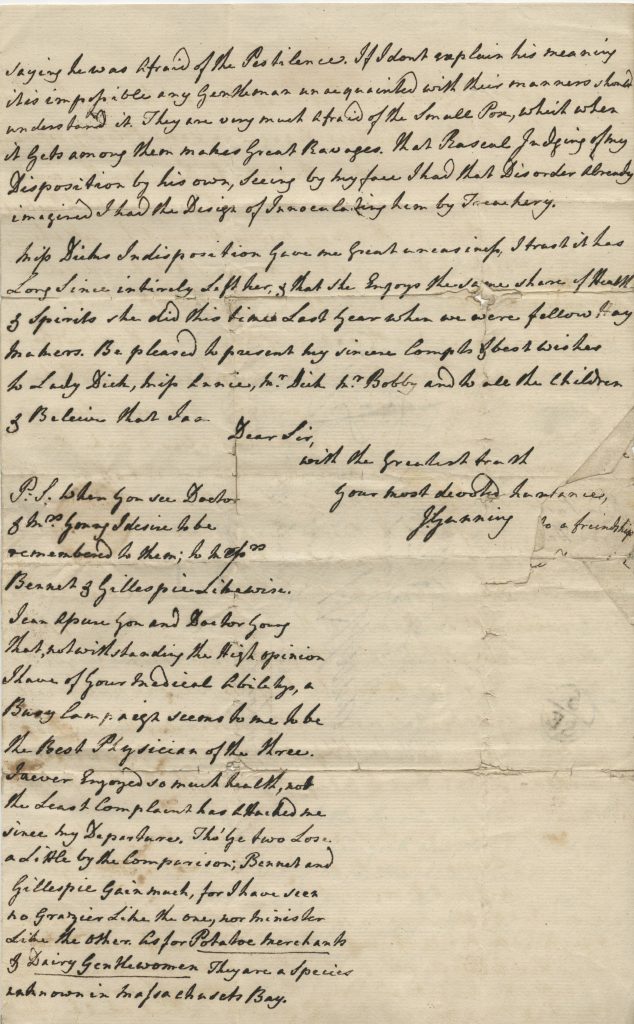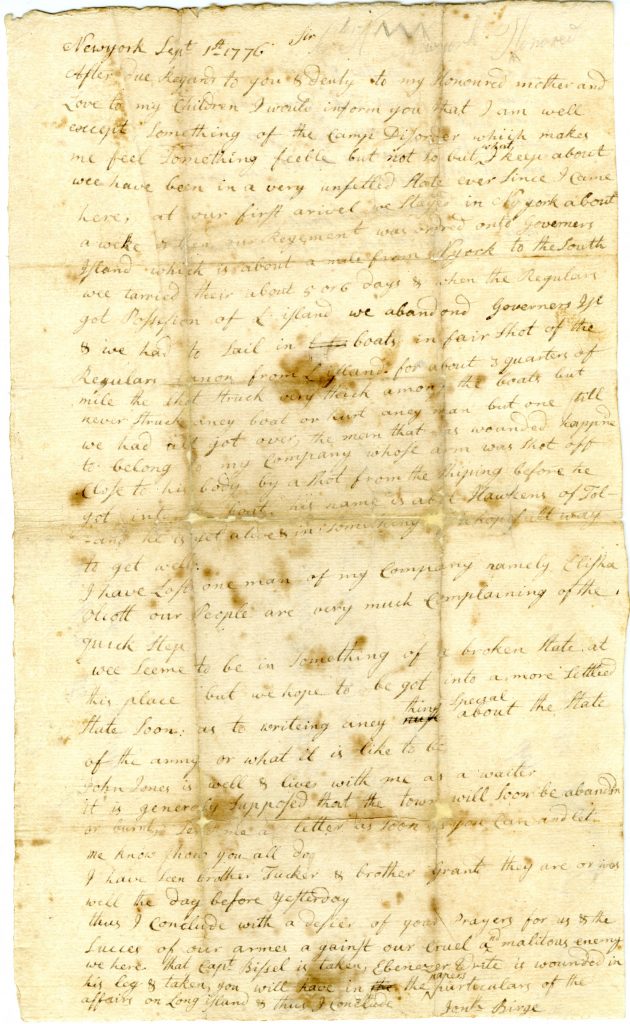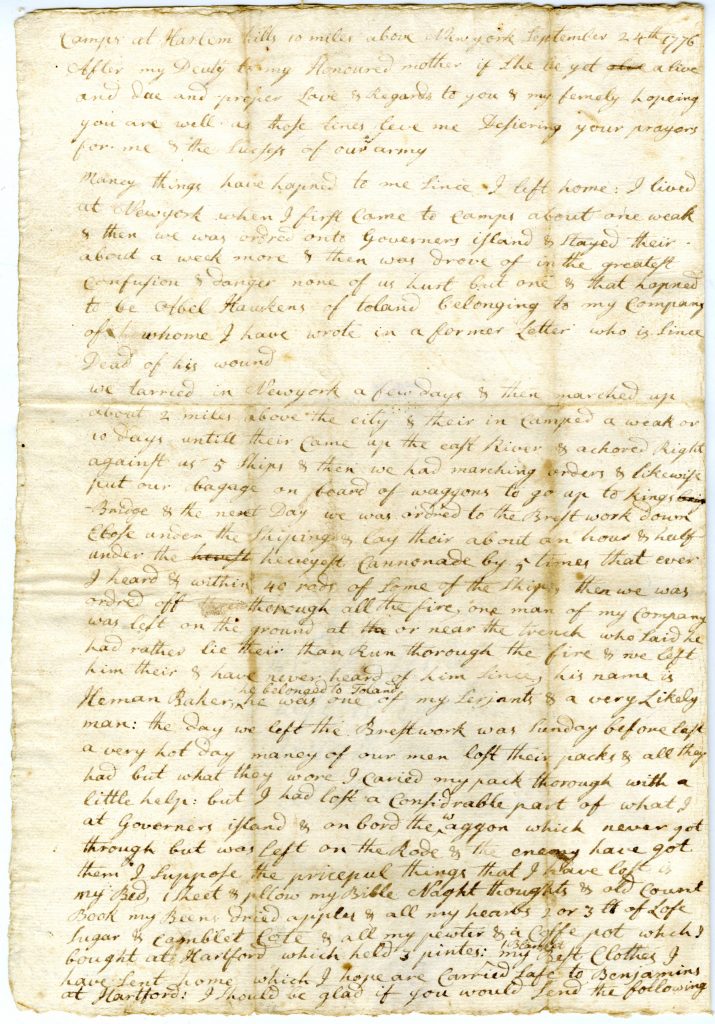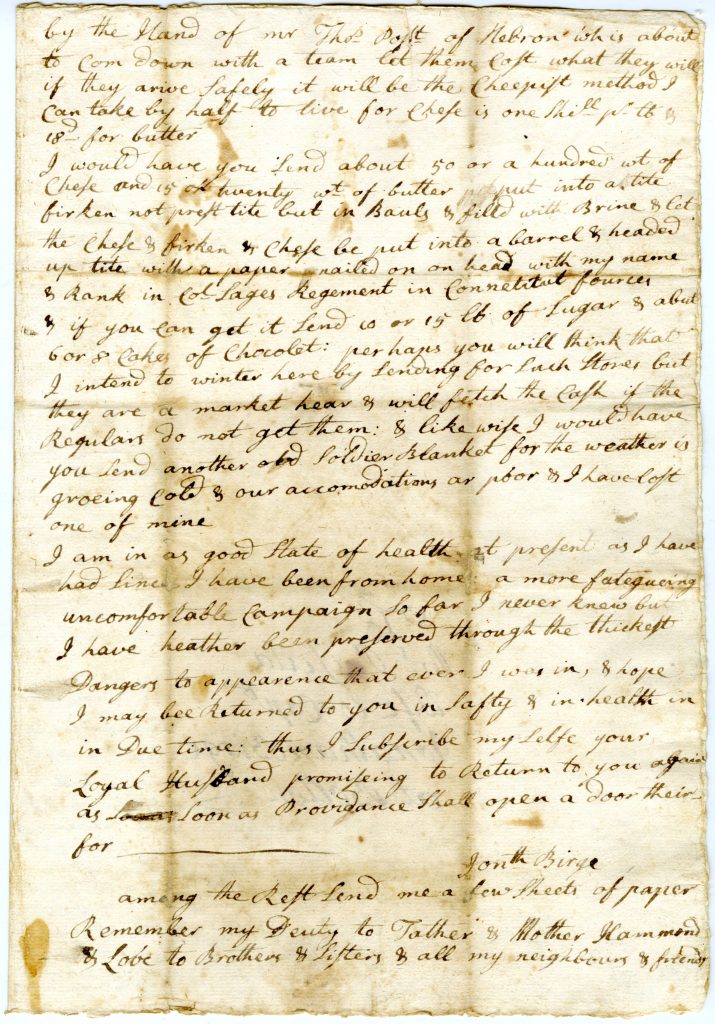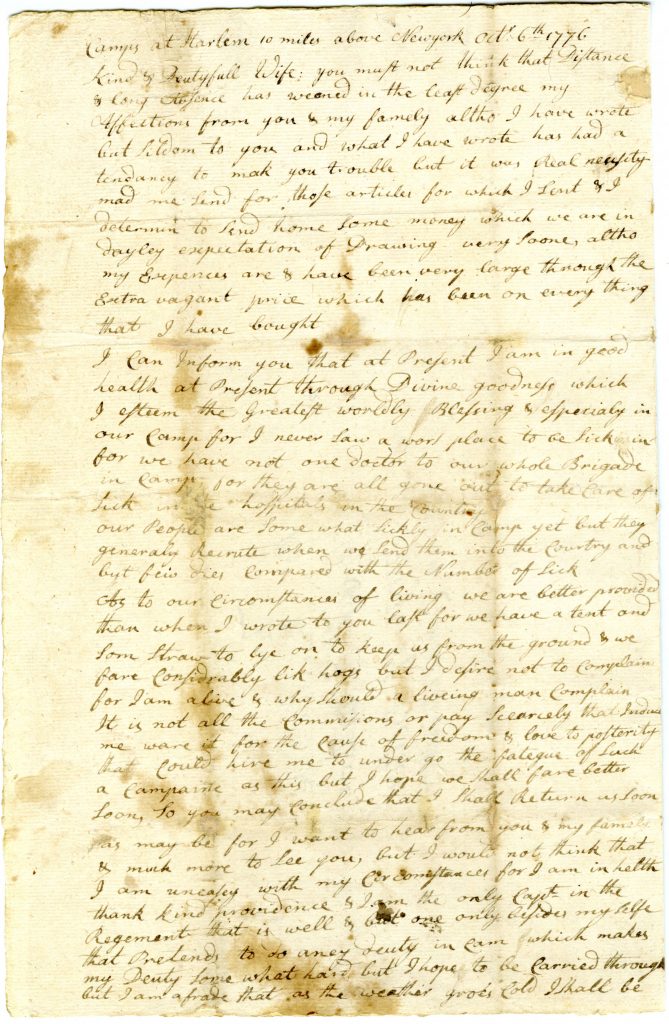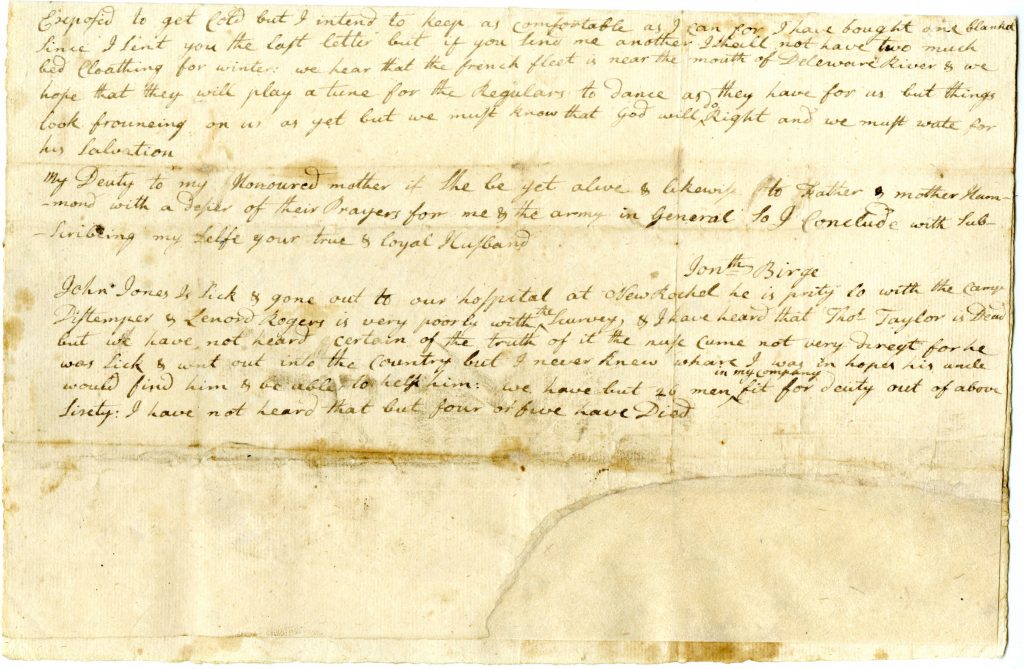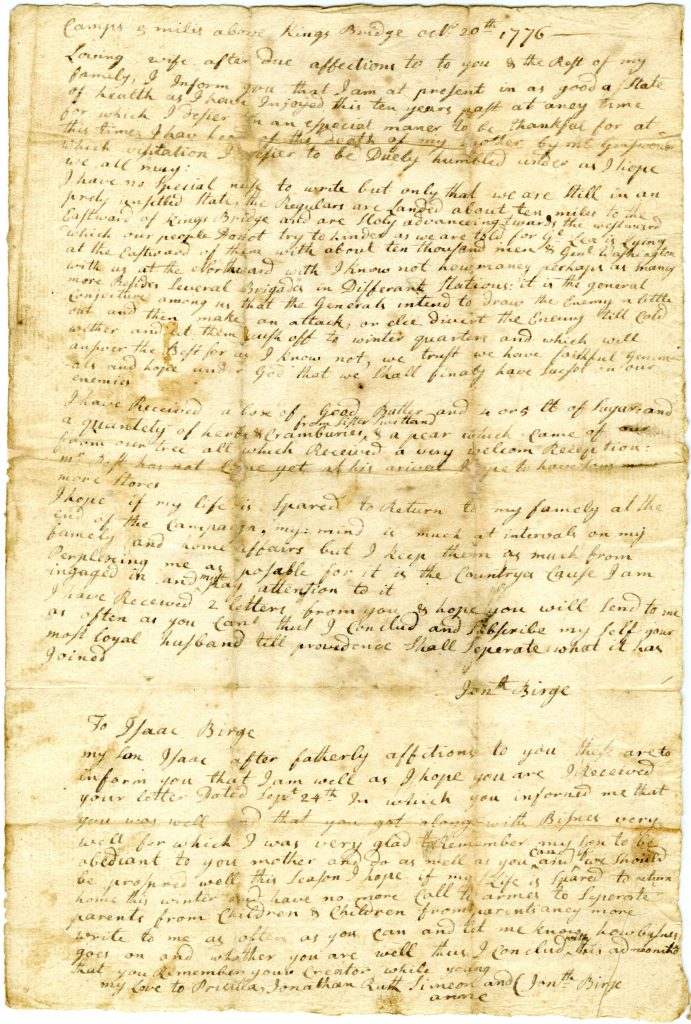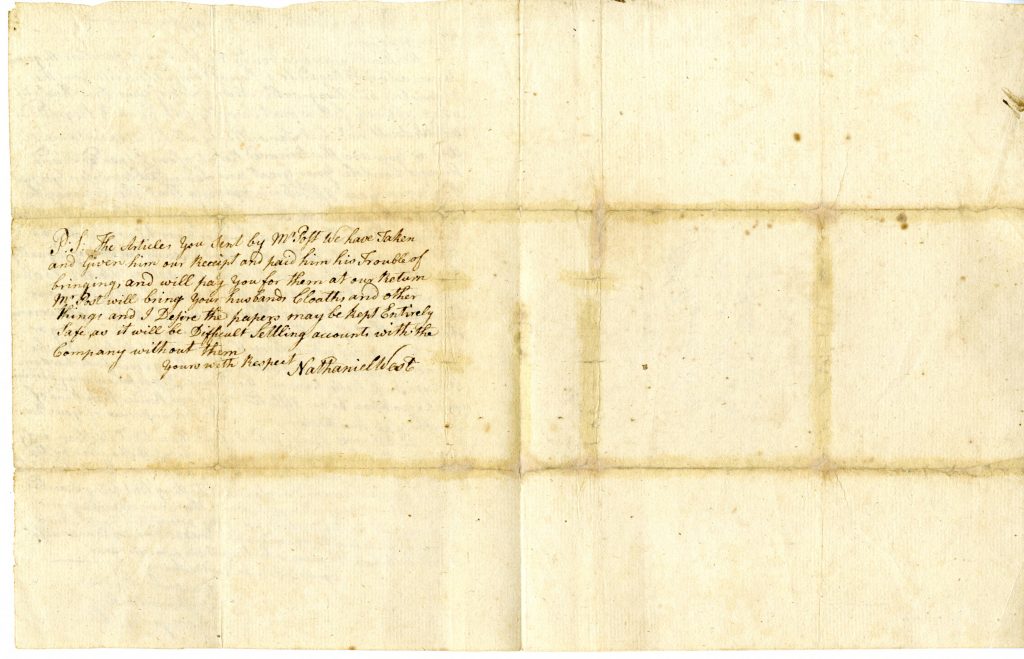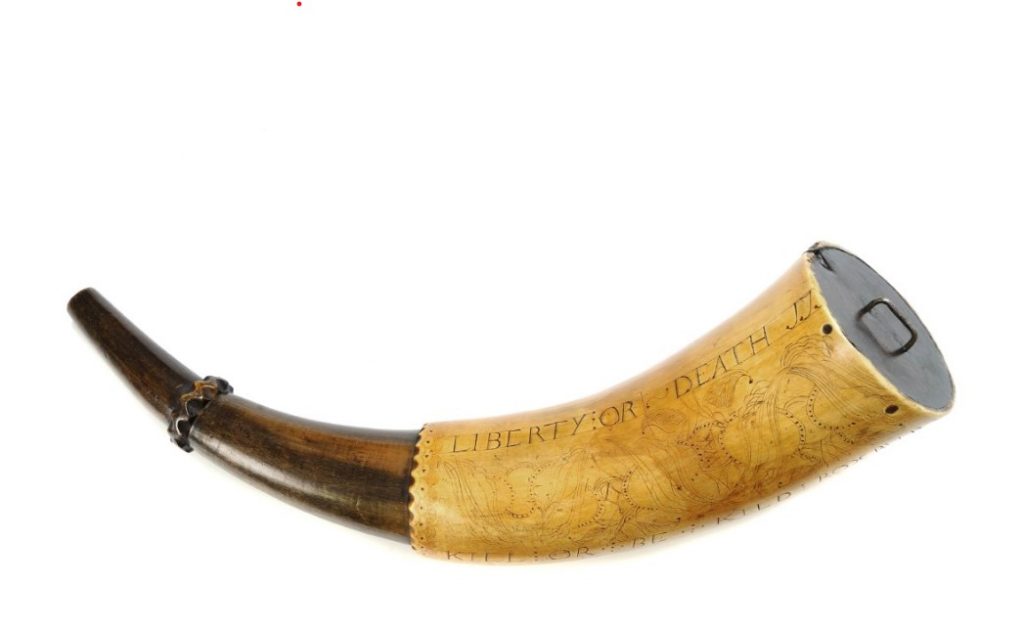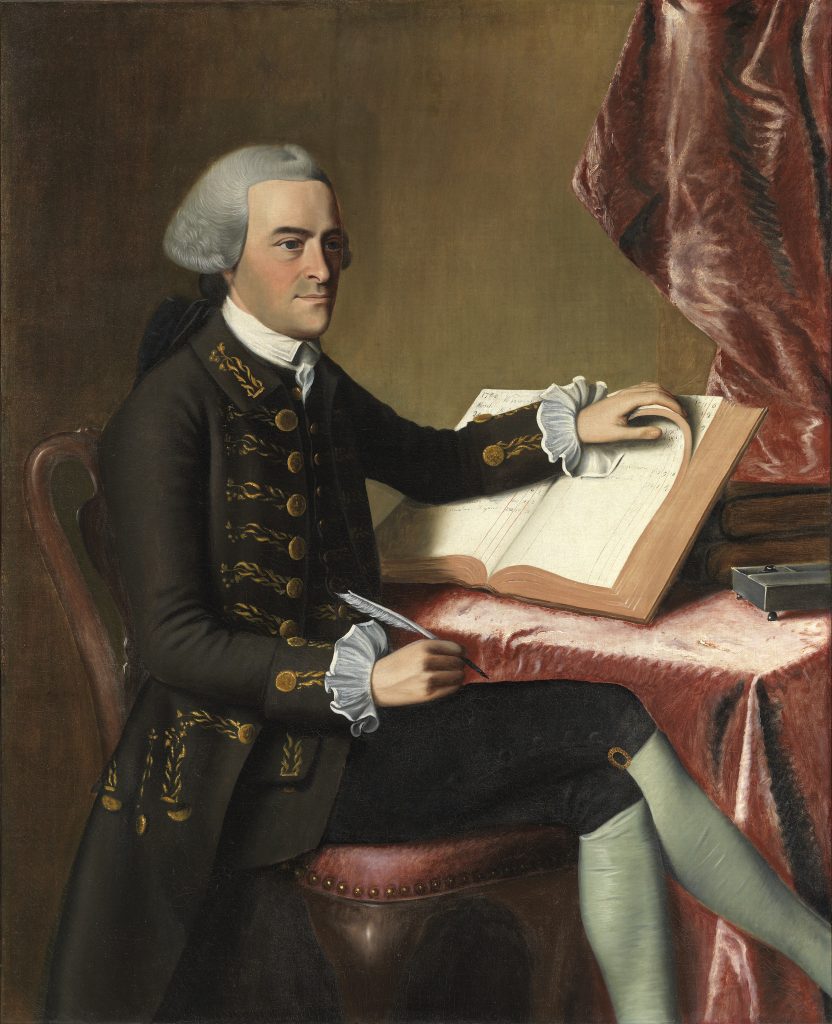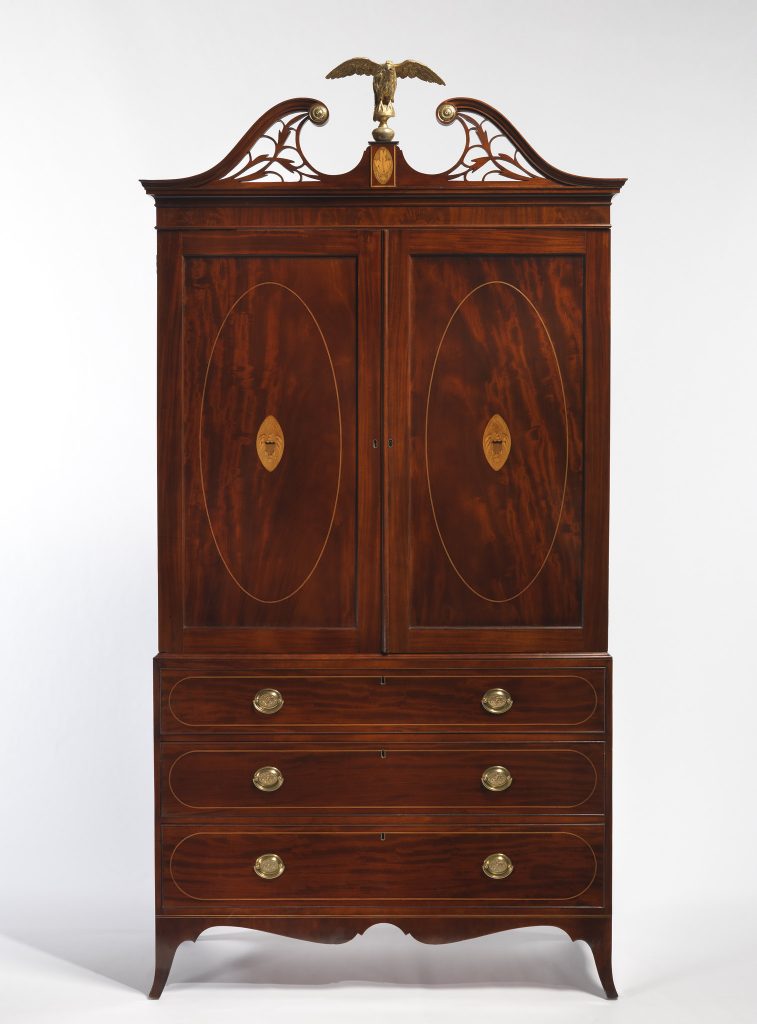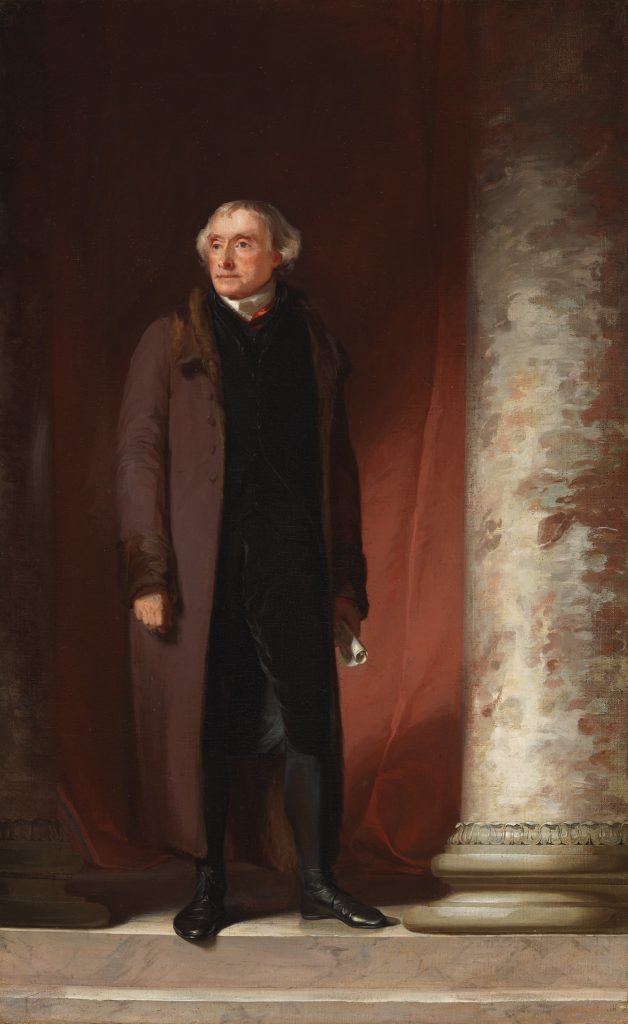Memphis School of Excellence
virtual
January 3, 2022
Learn about the four major achievements of the American Revolution—our independence, our republic, our national identity and our highest ideals—through the lens of one of our new library collection items The patriot’s monitor, for New-Hampshire : designed to impress and perpetuate the first principles of the revolution on the minds of youth : together with some pieces important and interesting : adapted for the use of schools and through the work of two of our master teachers, Rob Schulte and Laura James.
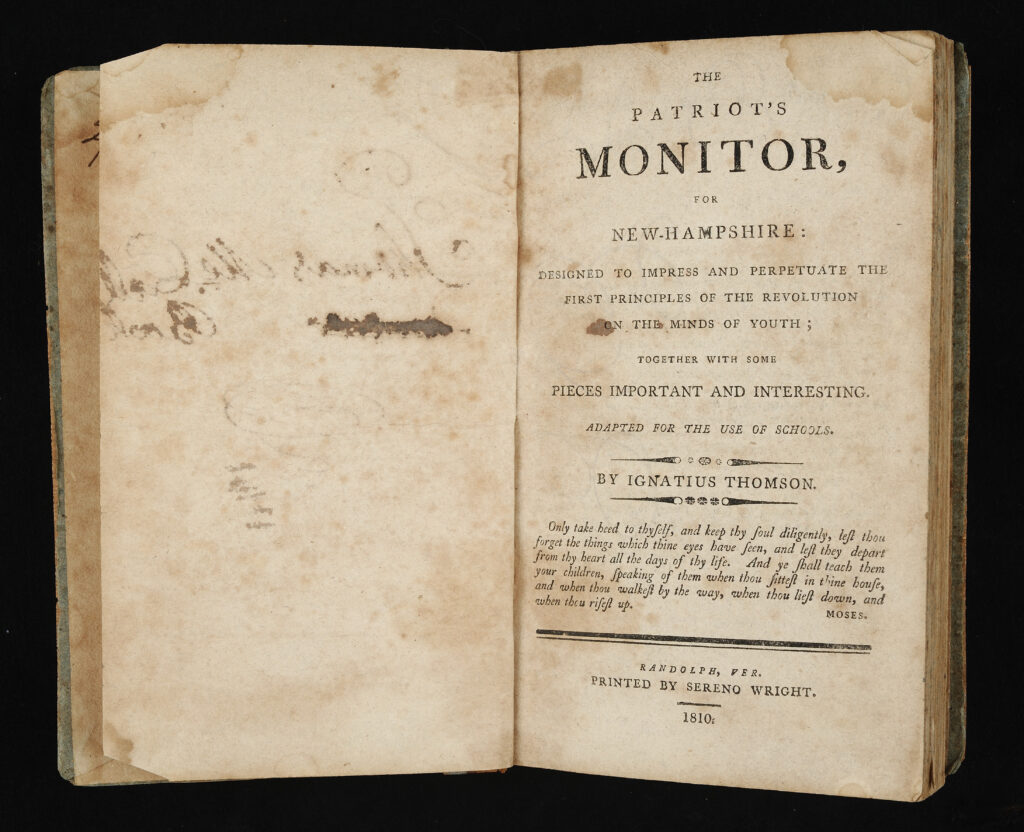
The Patriot's Monitor, for New-Hampshire: Designed to Impress and Perpetuate the First Principles of the Revolution on the Minds of Youth; together with Some Pieces Important and Interesting. Adapted for the Use of Schools
Ignatius Thomson
Randolph, Vermont: Sereno Wright, 1810The Society of the Cincinnati
This 1810 textbook “designed to impress and perpetuate the first principles of the Revolution on the minds of youth,” was compiled by the Rev. Ignatius Thomson of Pomfret, Vermont. He selected key documents of America’s founding, from the Declaration of Independence through the inaugural addresses of the first four presidents of the United States, along with other moral and patriotic lessons. Each paragraph of each text is numbered to facilitate recitation and reading aloud in a class.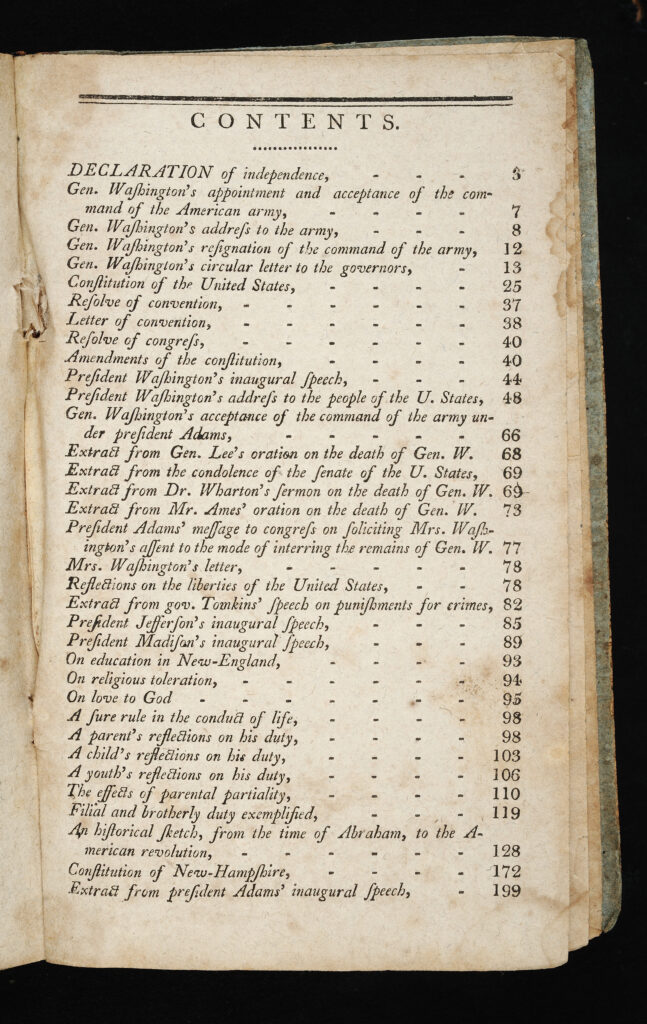
The Patriot's Monitor, for New-Hampshire: Designed to Impress and Perpetuate the First Principles of the Revolution on the Minds of Youth; together with Some Pieces Important and Interesting. Adapted for the Use of Schools
Ignatius Thomson
Randolph, Vermont: Sereno Wright, 1810The Society of the Cincinnati
George Washington’s central role in the achievement of American Independence is documented in the first five texts of the Patriot’s Monitor: “The Declaration of Independence” (p. 3-7); "General Washington's appointment and acceptance of the command of the American army" (p. 7-8); "General Washington's address to the army" (p. 8-12); "General Washington's resignation of the command of the army" (p. 12-13); and "General Washington's circular letter to the governors of the several states" (p. 13-24).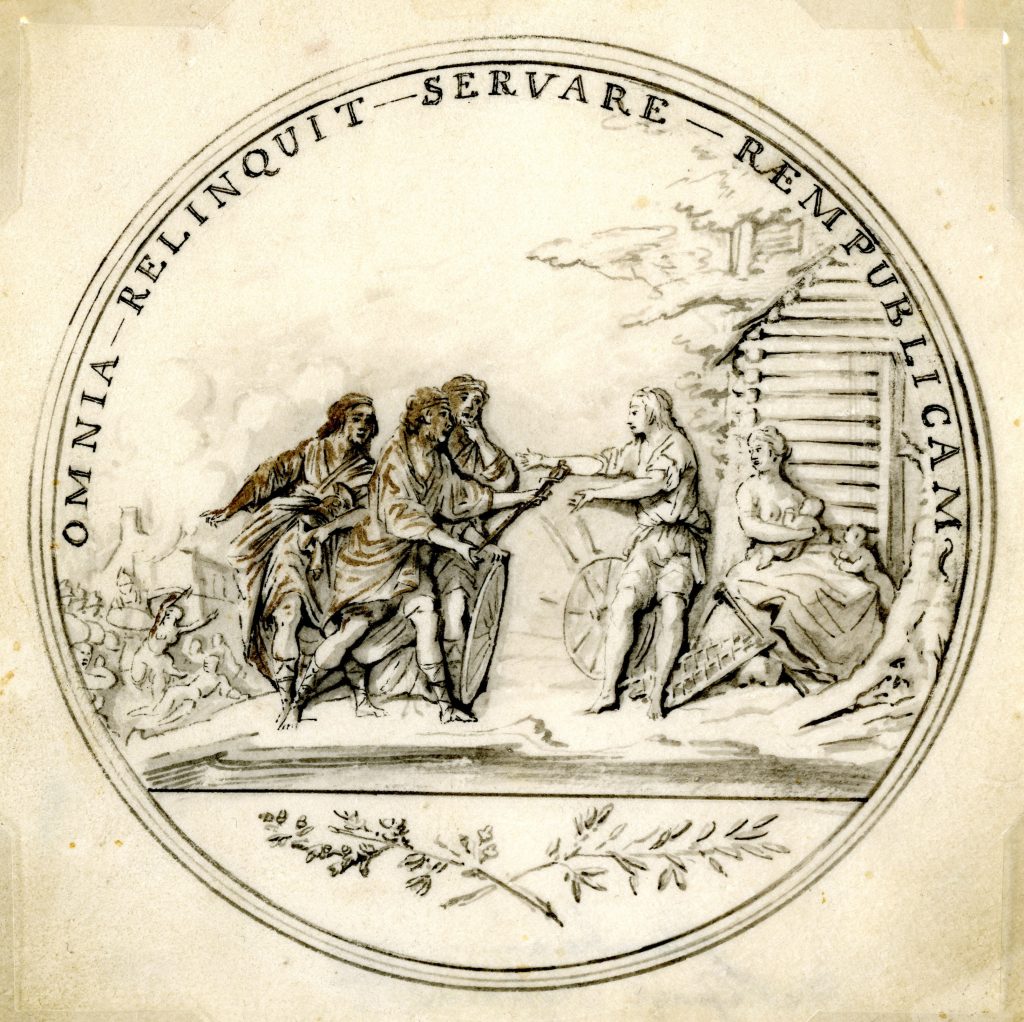
Drawing of the Society of the Cincinnati medal
Pierre-Charles L’Enfant
June 1783The Society of the Cincinnati Archives
At the request of the Society, Pierre-Charles L’Enfant, a French volunteer in the Continental Army Corps of Engineers, drew a design for a medal bearing imagery of the life of the fifth-century BC Roman hero Cincinnatus, from whom the Society takes its name. The obverse, shown here, depicts Cincinnatus receiving his sword from Roman senators as he leaves home to lead his country against its enemies.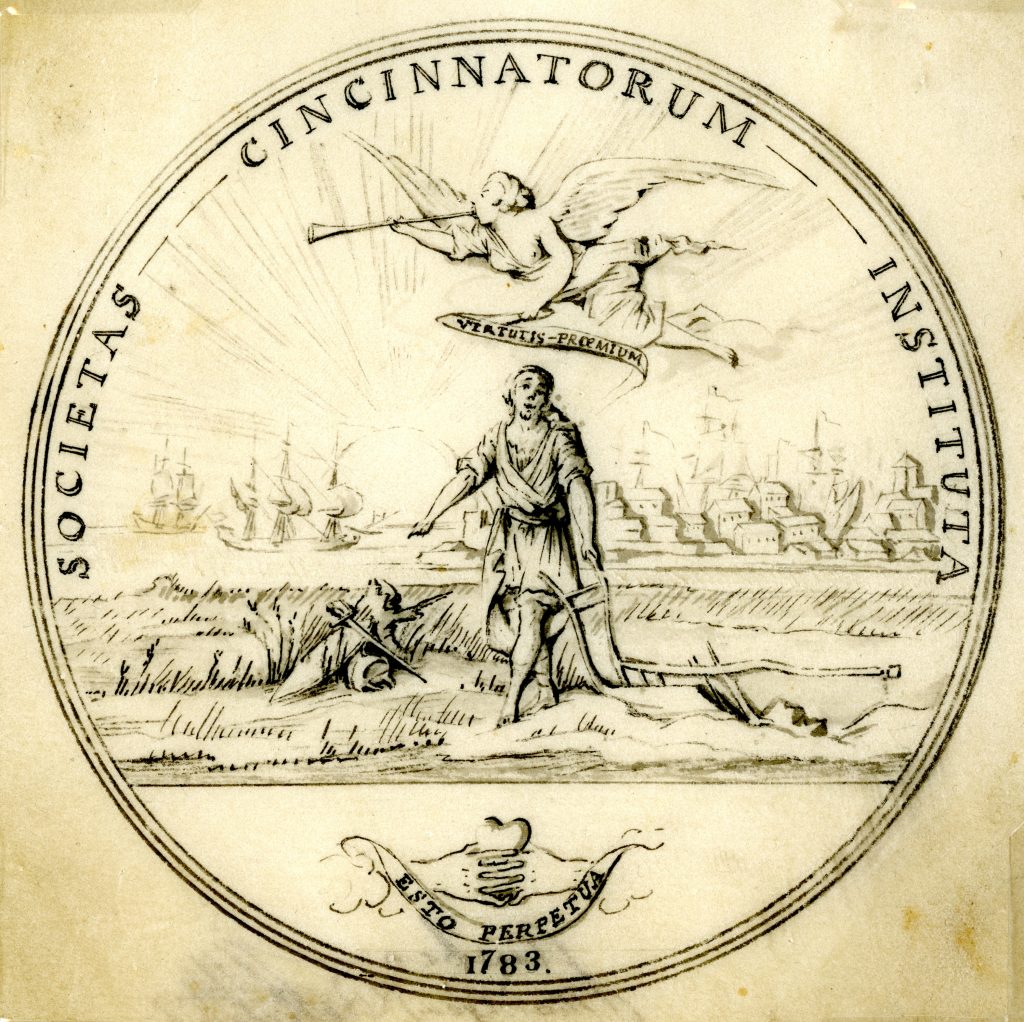
Sketch for the Society of the Cincinnati medal, reverse
Pierre-Charles L’Enfant
June 1783The Society of the Cincinnati Archives
The reverse side of the medal shown in L’Enfant’s pen-and-ink drawing features the victorious Cincinnatus returned to his plow, with the figure of Fame flying over him holding a banner that reads “Virtutis Praemium.”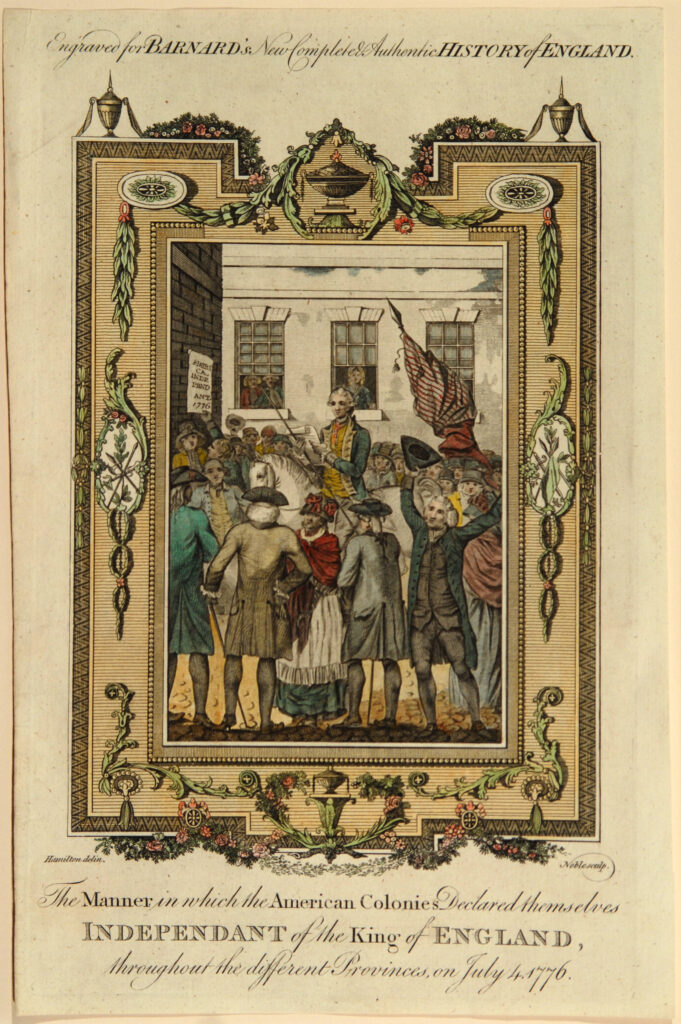
The Manner in which the American Colonies Declared themselves Independant of the King of England, throughout the different Provinces, on July 4, 1776
William Hamilton, artist, George Noble, engraver
London: A. Hogg, 1783The Society of the Cincinnati
Man on horseback reads Declaration of Independence to a cheering crowd in a town. American flag in the background. At the top of the engraving, it states that it was "Engraving for Barnard's New Complete & Authentic History of England."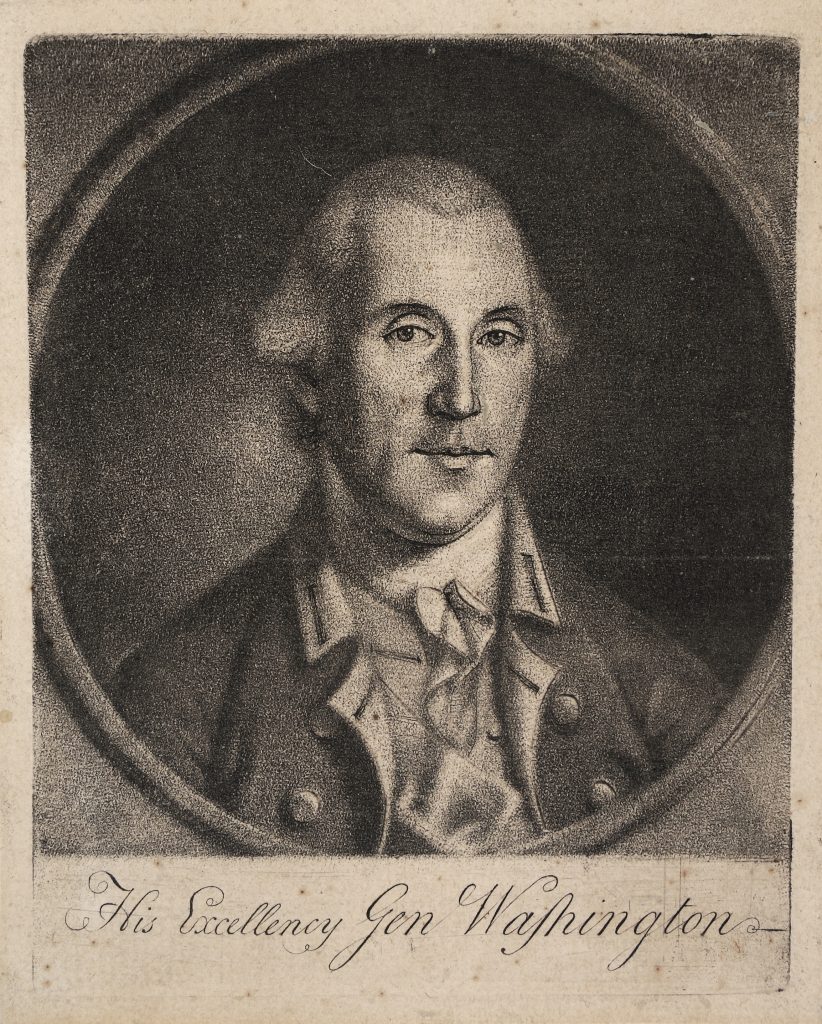
"His Excellency Gen Washington"
Charles Willson Peale
Philadelphia, 1778The Society of the Cincinnati, The Robert Charles Lawrence Fergusson Collection
Peale's mezzotint is based on his own painting of Washington from life, the first authentic likeness of Washington to appear in print. One of only three examples of the mezzotint known (the other examples are in the collection of the National Portrait Gallery, Washington, DC; and in the Archivo General de Indias, Seville, Spain).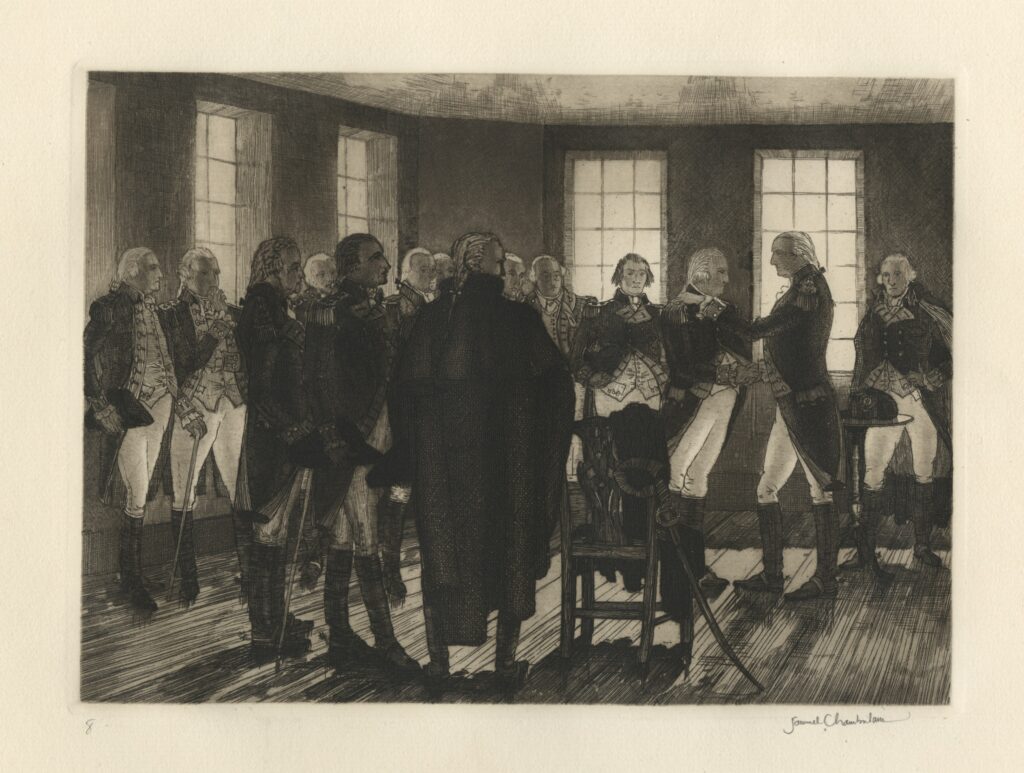
Washington's Farewell to His Officers
Samuel Chamberlain, engraver
New York: George Washington Memorial Association, 1932The Society of the Cincinnati
General Washington saying farewell to his officers in Fraunces Tavern, New York. From the portfolio "The bicentennial pageant of George Washington portfolio; no. 15 in the series of 20 etchings, issued in connection with the celebration of the two hundredth anniversary of the birth of George Washington by The George Washington Memorial Association. Printed on full sheets of handmade laid paper; watermarked with Washington coat of arms and initials GW at opposite corners.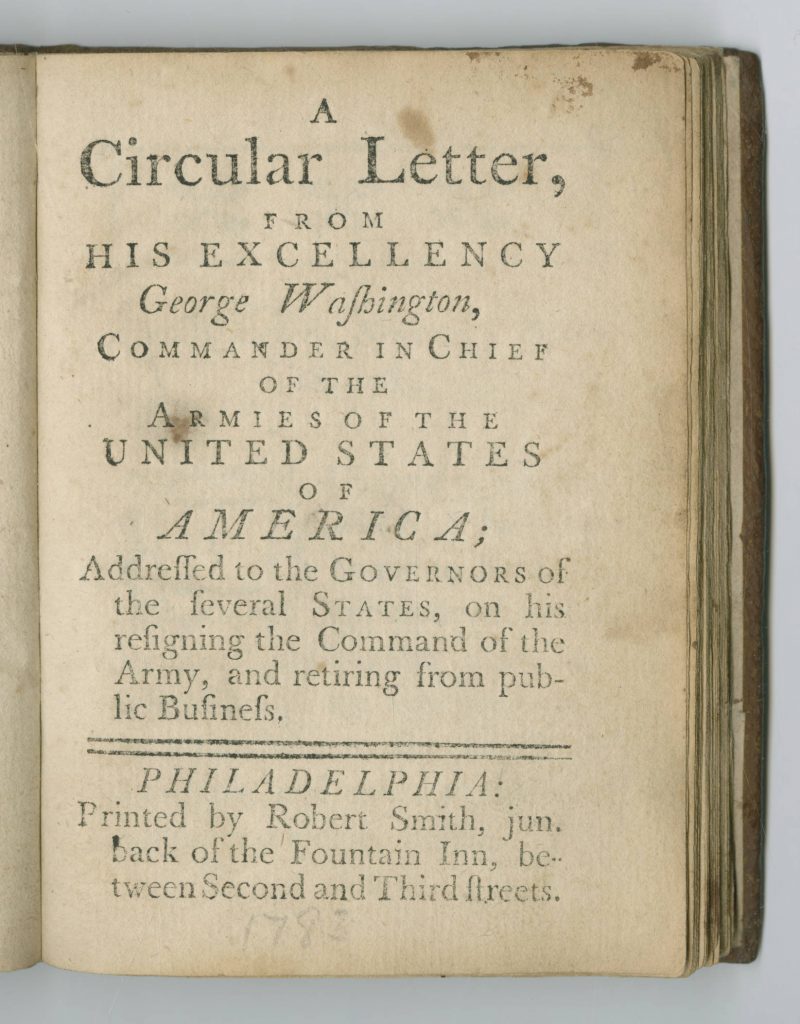
A Circular Letter, from His Excellency George Washington, Commander In Chief of the Armies of the United States of America; Addressed to the Governors of the several States, on his resigning the Command of the Army, and retiring from public Business.
George Washington
Philadelphia: Robert Smith, 1783The Society of the Cincinnati, The Robert Charles Lawrence Fergusson Collection
At the end of the Revolutionary War, Washington issued a “circular letter” to the governors of the states, in which he reflected on the great achievement of independence and laid out his opinions on how the nation must proceed to keep this independence secure.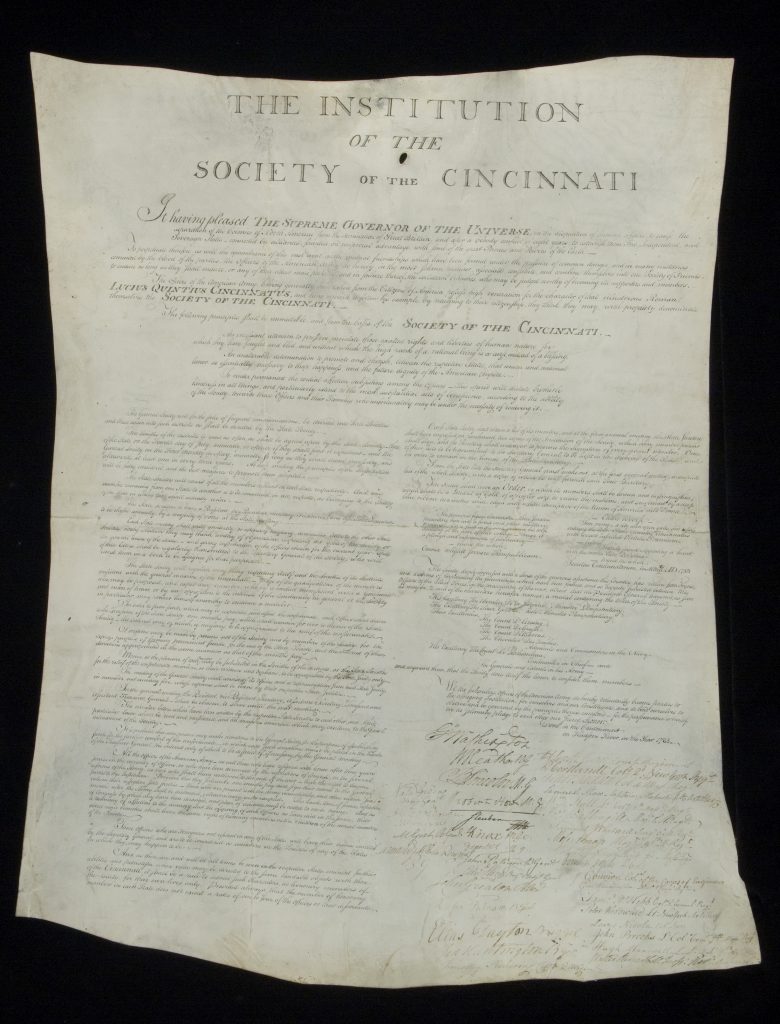
The Institution of the Society of the Cincinnati
May 1783The Society of the Cincinnati Archives
Adopted at the founding meeting on May 13, 1783, the Institution remains the principle guiding document of the organization to the present day. The first official copy was inscribed on a large, irregularly shaped sheet of parchment and signed by George Washington and thirty-five other officers. The Institution lays out the tenets and organizational structure of the Society, the rules of eligibility to membership, the establishment of constituent branches and details of the Society’s insignia. To join the Society, the original members were required to sign their names to the Institution, thus pledging their allegiance to the immutable principles upon which the Society was founded.![Click for a larger view. La destruction de la statue royale a Nouvelle Yorck by André Basset [possible], ca. 1776](https://www.americanrevolutioninstitute.org/wp-content/uploads/2019/10/La_destruction_de_la_statue_royale_a_Nouvelle_Yorck_New_Yorkers_pull_down_George_IIIs_statue_engraving-2-1024x745.jpg)
La destruction de la statue royale a Nouvelle Yorck [New Yorkers pull down George III's statue]
André Basset, publisher [possible]
ca. 1776The Society of the Cincinnati
On July 9, 1776, after hearing the reading of the Declaration of Independence, New Yorkers tore down the gilt equestrian statue of King George III located on the Bowling Green.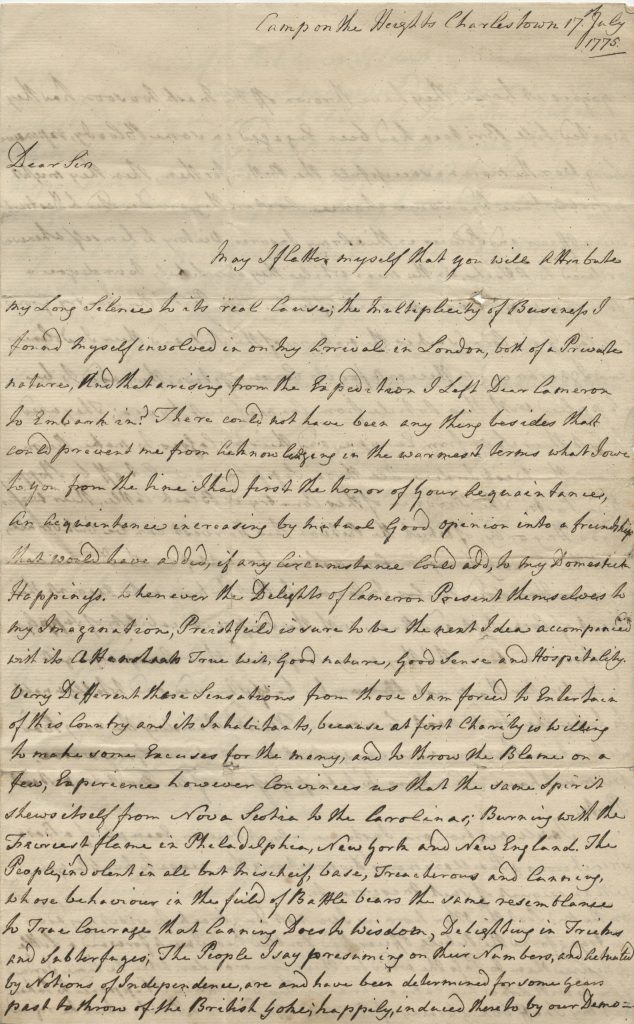
John Gunning to Alexander Dick
July 17, 1775The Society of the Cincinnati, The Robert Charles Lawrence Fergusson Collection
page 1Written by a captain of the British army during the siege of Boston, expressing contempt of the American "habituated by notions of independence... the same spirit shews itself from Nova Scotia to the Carolinas . . ."
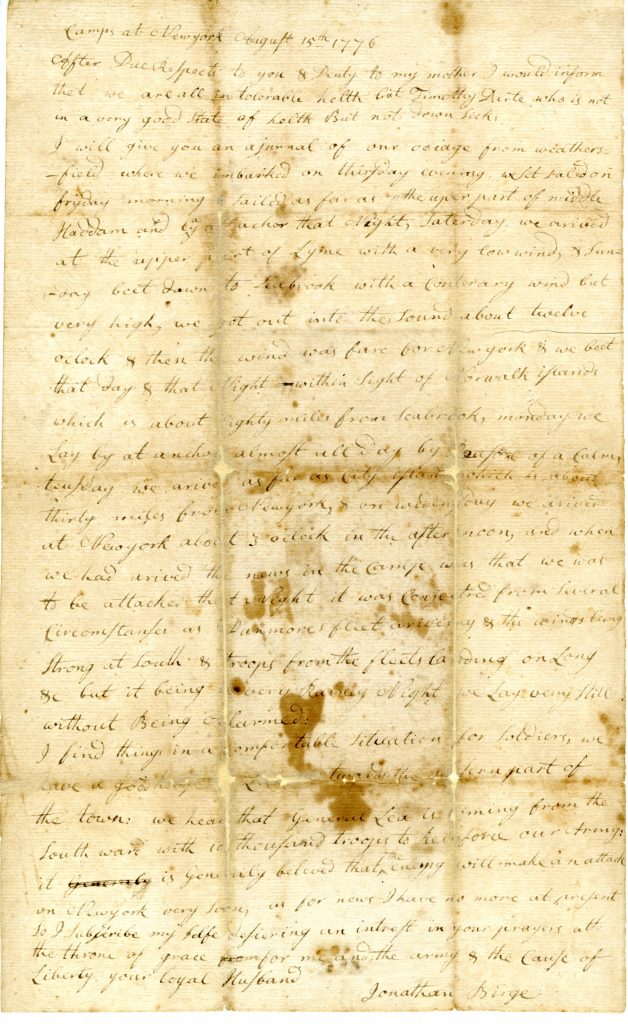
Jonathan Birge to Priscilla Birge
August 15, 1776The Society of the Cincinnati, The Robert Charles Lawrence Fergusson Collection
Series of letters by Jonathan Birge to his wife, Pricilla Birge, regarding the role of him and his company of troops during the 1776 New York campaign.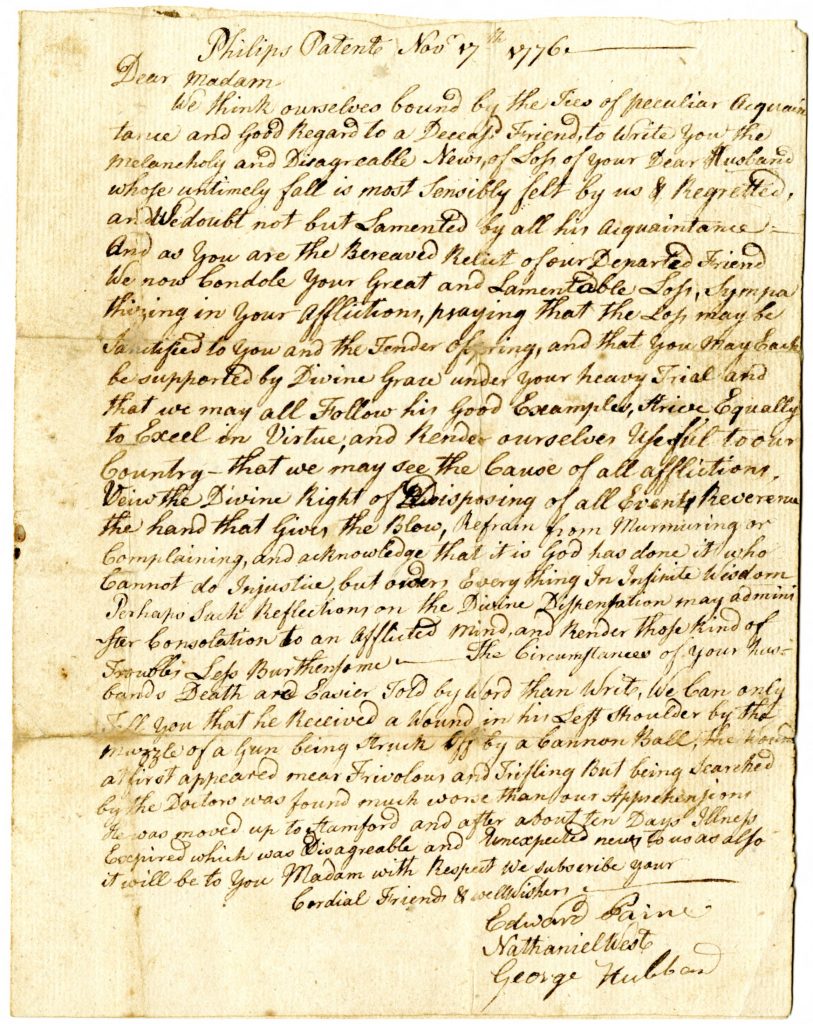
Edward Paine, Nathaniel West and George Hubbard to Priscilla Birge
November 17, 1776The Society of the Cincinnati, The Robert Charles Lawrence Fergusson Collection
page 1Edward Paine, Nathaniel West and George Hubbard to Priscilla Birge, regarding the death of Jonathan Birge.

The Institution of the Society of the Cincinnati
May 1783The Society of the Cincinnati Archives
Adopted at the founding meeting on May 13, 1783, the Institution remains the principle guiding document of the organization to the present day. The first official copy was inscribed on a large, irregularly shaped sheet of parchment and signed by George Washington and thirty-five other officers. The Institution lays out the tenets and organizational structure of the Society, the rules of eligibility to membership, the establishment of constituent branches and details of the Society’s insignia. To join the Society, the original members were required to sign their names to the Institution, thus pledging their allegiance to the immutable principles upon which the Society was founded.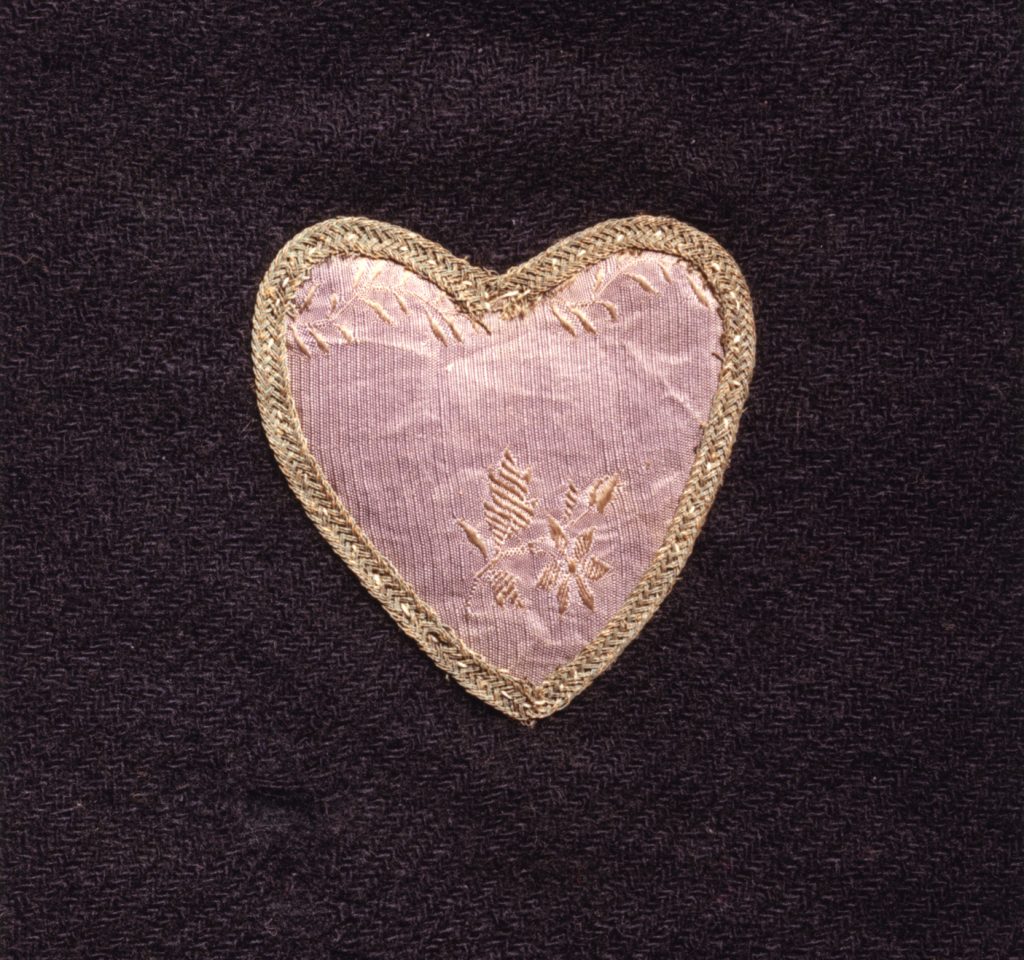
Badge of Military Merit
ca. 1782-1783Collection of the American Independence Museum, Exeter, NH and the Society of the Cincinnati in the State of New Hampshire. Gift of William L. Willey.
George Washington created the Badge of Military Merit—the first military decoration for enlisted men—on August 7, 1782. The award recognized distinguished conduct and was intended to encourage “virtuous ambition” and “every species of Military merit.” Soldiers honored with the award “shall be permitted to wear on his facings over the left breast, the figure of a heart in purple cloth, or silk, edged with narrow lace or binding.” Only two reputed examples are known, of which this is one. The decoration fell out of use after the Revolutionary War but was revived in 1932 as the modern Purple Heart.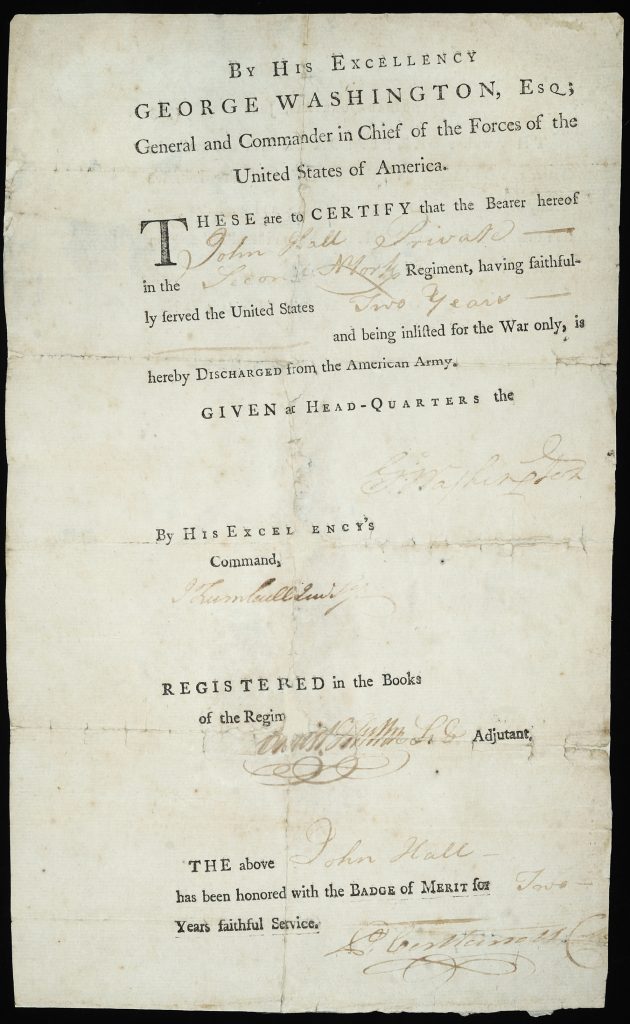
Discharge of Private John Hall
[1783]The Society of the Cincinnati, Gift of Robert L. Buell, 1966
In accordance with instructions from Congress, the soldiers of the Continental Army who had enlisted for the duration were furloughed in June 1783—and were sent home with no more than one month’s pay in cash and promissory notes for a few months additional pay. John Hall, a private in the Second New York Regiment, received this discharge, noting he “has been honored with the Badge of Merit for two years faithful service.”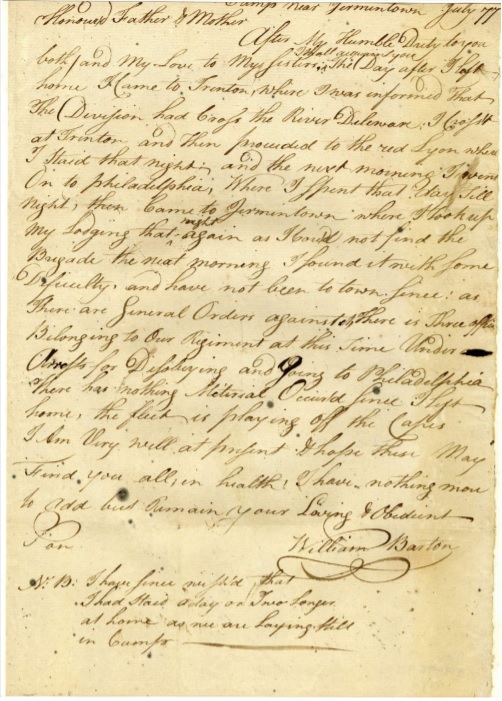
William Barton to Father and Mother
July 1777The Robert Charles Lawrence Fergusson Collection
These letters are addressed to Barton's father, Gilbert Barton, and other family members at Allentown, N.J. Letters are contained in a blue and buff leather clamshell case custom made by Handbridge Bindery. Several mention military events relating to Germantown, Valley Forge, the French fleet, prisoner exchanges, and Sullivan's campaign against the Iroquois, including the death of Capt. Davis; others describe camp life which "does not very well agree with me", homesickness, clothing and other supply needs Also included is a letter from Barton's friend Jno. Blair to Gilbert Barton, 24 Feb. 1778, [#5] advising that his son is unwell and "beggs that you would speak to Colo. Brearely [David Brearley] to write to Major [John] Conway to give him leave to go home." Barton, Blair, and Brearley were original members of the Society of the Cincinnati.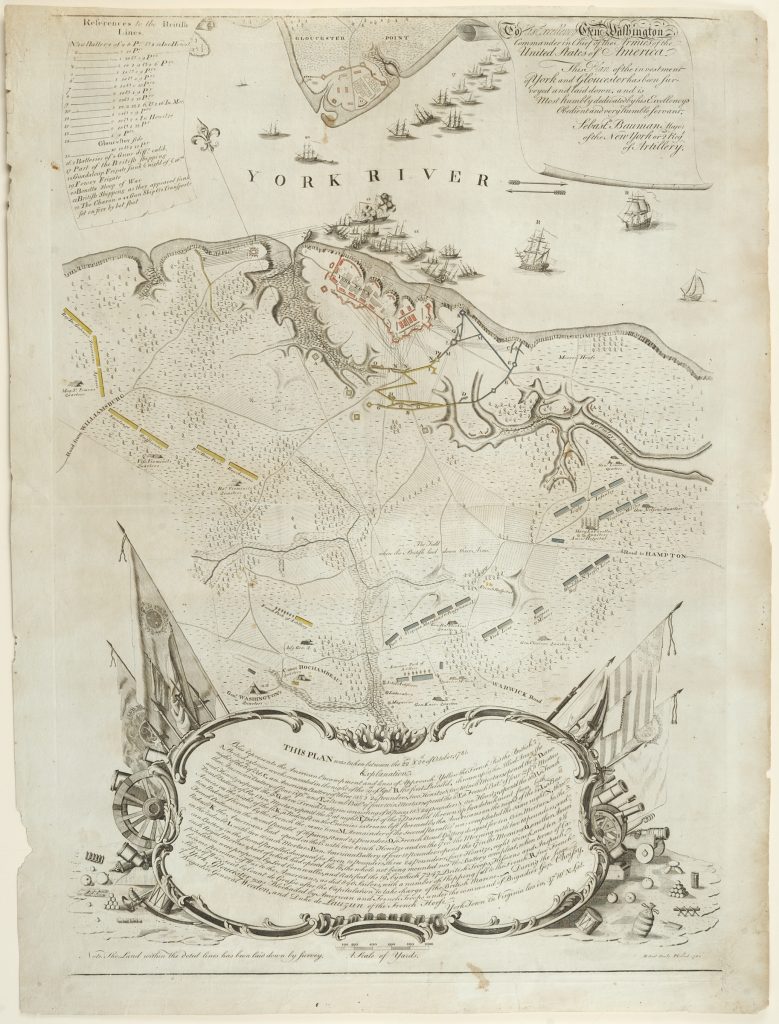
Plan of the Investment of York and Gloucester
Sebastian Bauman
Philadelphia, 1782The Robert Charles Lawrence Fergusson Collection
Within days of the British surrender at Yorktown, General George Washington directed Major Sebastian Bauman of the Second Regiment Continental Artillery to survey the battlefield and encampments. The following year Bauman collaborated with a Philadelphia engraver, Robert Scot, to publish this elegant large-scale map “in order that the public may form an idea of that memorable siege.” Dedicated to General Washington, Bauman’s plan provides remarkable detail of the topography, fortifications, siege works, positions of the American and British lines, headquarters of the commanding officers and “The Field where the British laid down their Arms.”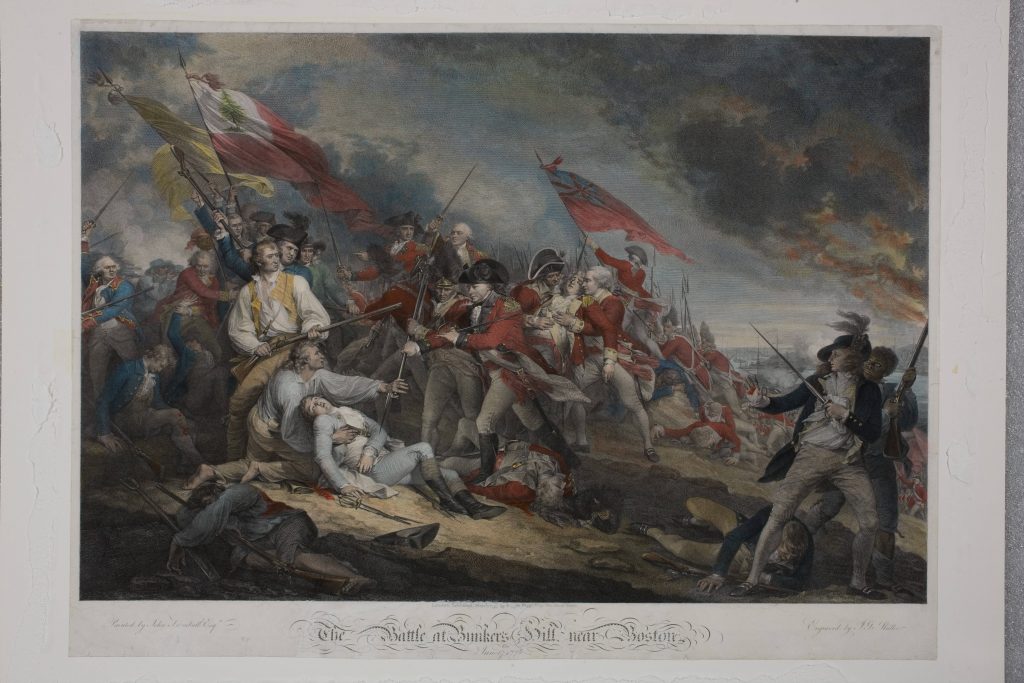
The Battle at Bunkers Hill near Boston the June 17th 1775
Johann Gotthard von Mueller, engraver, after John Trumbull
London: Antonio C. de Poggi, No. 91 New Bond Street, 1798The Robert Charles Lawrence Fergusson Collection
The scene of the battle with General Joseph Warren lying dead in the center surrounded by anxious officers with the battle raging in the background. This is a copy of the first engraving arranged by Trumbull after he completed his painting, titled, The death of General Warren at the Battle of Bunker's Hill, 17 June 1775, in Benjamin West's studio in London in 1786. Because no English engravers would produce a work celebrating the victory of the Americans during the Revolution, Trumbull had it engraved by Muller in Stuttgart and later it was published by A. C.de Poggi in London in 1798.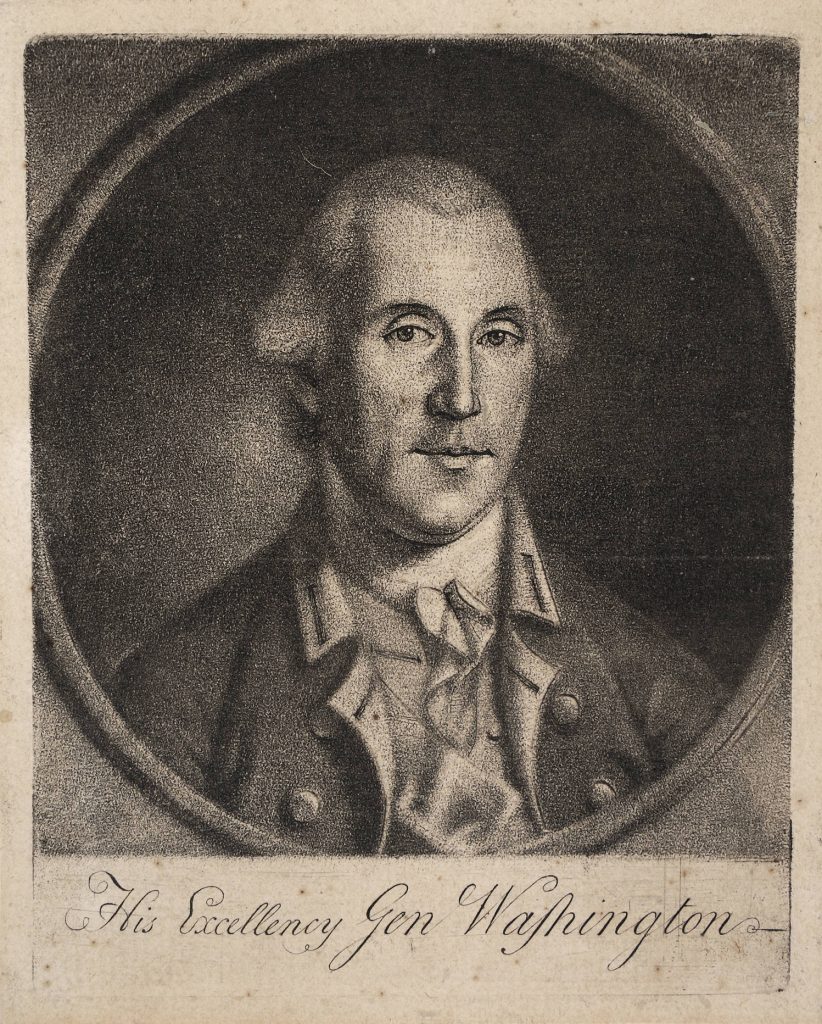
"His Excellency Gen Washington"
Charles Willson Peale
Philadelphia, 1778The Society of the Cincinnati, The Robert Charles Lawrence Fergusson Collection
Peale's mezzotint is based on his own painting of Washington from life, the first authentic likeness of Washington to appear in print. One of only three examples of the mezzotint known (the other examples are in the collection of the National Portrait Gallery, Washington, DC; and in the Archivo General de Indias, Seville, Spain).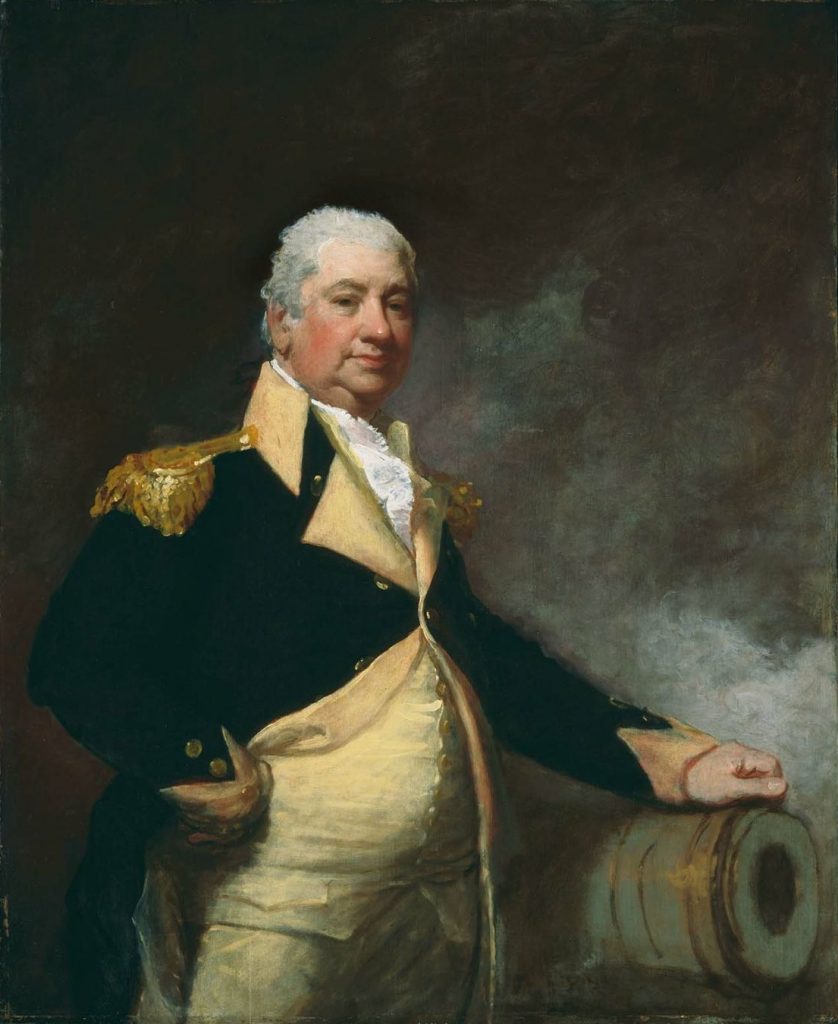
Peter Roos (1850-1910) after Gilbert Stuart (1755-1828)
Late 19th–Early 20th century
The Society of the Cincinnati, The Robert Charles Lawrence Fergusson Collection
Henry Knox, who served as chief of artillery in George Washington’s army, first described an organization of veteran officers in 1775. As the Revolutionary War drew to a close in 1783, Knox proposed the creation of the Society of the Cincinnati and drafted the original Institution. He served as the first secretary general of the Society and later as vice president general. This copy of Gilbert Stuart’s 1806 portrait of Henry Knox depicts the general in a post-Revolutionary War uniform standing next to a cannon—a reference to Knox’s role in the Continental Army. Knox was a twenty-five-year-old Boston bookseller when the Revolutionary War began. He had taught himself the basic principles of gunnery reading books on military science in his store. George Washington made Knox chief of artillery and ordered him to bring heavy guns overland from Fort Ticonderoga to force the British to evacuate Boston. Knox’s journey from Ticonderoga to bring the cannons to Washington’s army is one of the epic feats in American military history.
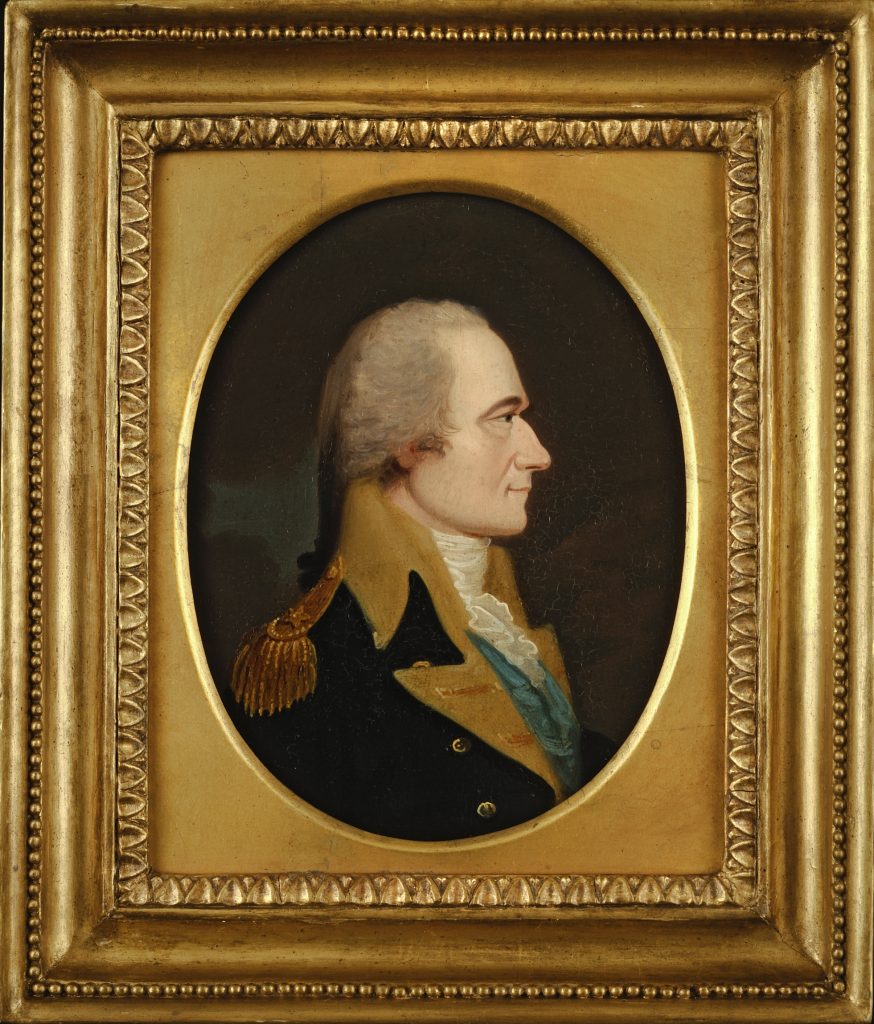
Alexander Hamilton
William J. Weaver (ca. 1759-1817)
ca. 1806Museum Acquisitions Fund purchase, 2016
Alexander Hamilton wore a uniform like the one depicted in this portrait as the senior major general in the U.S. Army during the Quasi-War with France in 1798-1800—but the artist mistakenly painted only one star on each epaulet instead of two. William J. Weaver painted versions of this posthumous oil-on-wood panel portrait for Hamilton’s friends and admirers. This example was owned in the nineteenth century by George W. Riggs of Washington, D.C.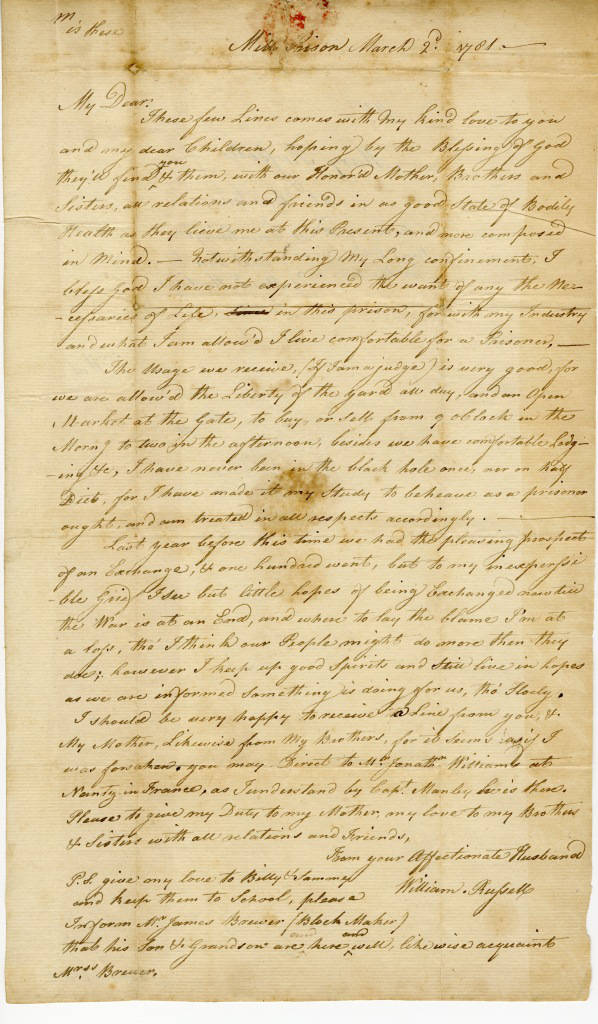
William Russell to Mary Russell
March 2, 1781The Robert Charles Lawrence Fergusson Collection
Russell was an American privateer who was captured by the British and held prisoner first at Mill Prison in England, and after his release he was recaptured and incarcerated in the prison ship 'Jersey' at New York. When he was finally released in March 1783, desperate to repay debts & provide for his family, he joined a merchant ship to make money before returning home to his family, but within a year he died of consumption.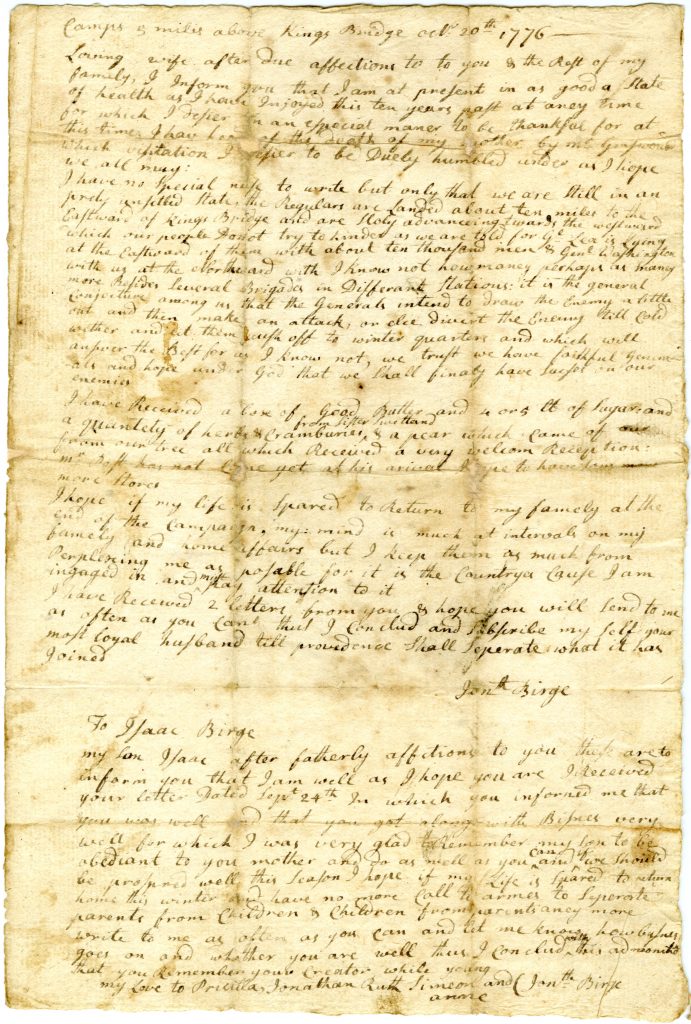
Jonathan Birge to Priscilla Birge
October 20, 1776The Robert Charles Lawrence Fergusson Collection
This is one of six letters written by Capt. Jonathan Birge of Connecticut to his wife describing the activities of his regiment during the difficult New York campaign. Emotions of love and loss are intertwined with details of company activities, troop movements, requests for supplies, sickness and causalities.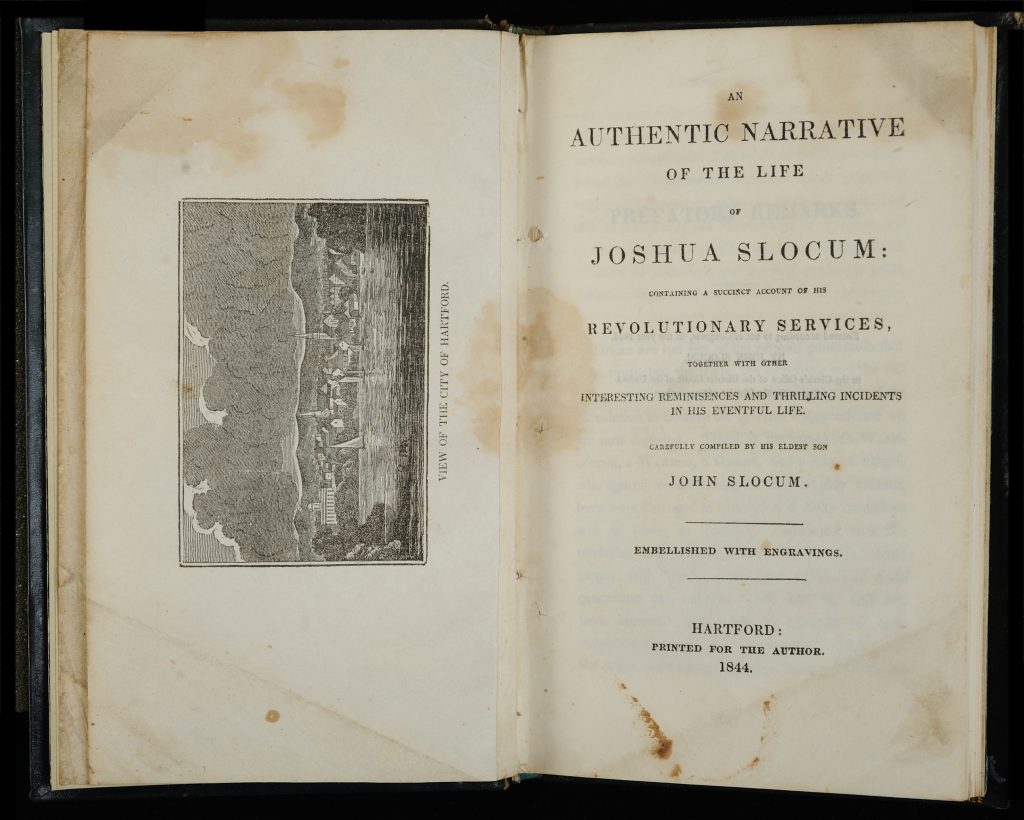
An Authentic Narrative of the Life of Joshua Slocum
Hartford: Printed for the author, 1844The Society of the Cincinnati, The Robert Charles Lawrence Fergusson Collection
Prefatory Remarks: “The names of a Washington, a Warren, a Green, and a host of others, who figured conspicuously in that mighty contest, have been blazoned in history, and their memories will go down to posterity embalmed with the tenderest recollections of the heart. … But while we concede to these renowned Generals and distinguished Civilians all the praise their exalted service deserve, we should not forget those who in a more humble and subordinate capacity, faithfully served their country … While yet they live,—while the low, glimmering, dying taper yet quivers into darkness, let them be respected; and let those of the present more selfish generation emulate their noble example” (pp. v-vi). Edited by John Slocum, the subject’s son. View of the city of Hartford on the frontispiece.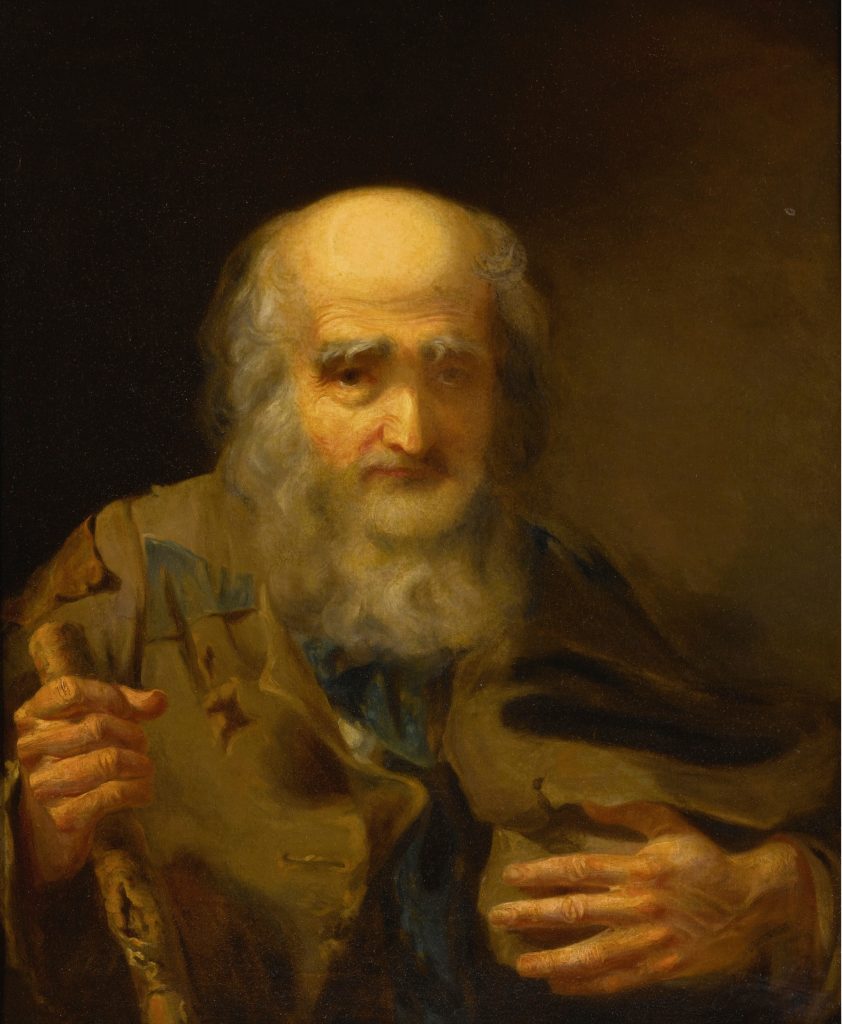
A Pensioner of the Revolution
John Neagle (1796-1865)
1830The Society of the Cincinnati, Museum purchase, 2017
This somber and arresting portrait depicts a homeless veteran living on the street in Philadelphia named Joseph Winter. The painting attracted popular attention in early 1831, when John Sartain published a mezzotint engraving of the work titled Patriotism and Age, which became a call to the conscience of the nation to care for those who had fought its battles and won its freedom.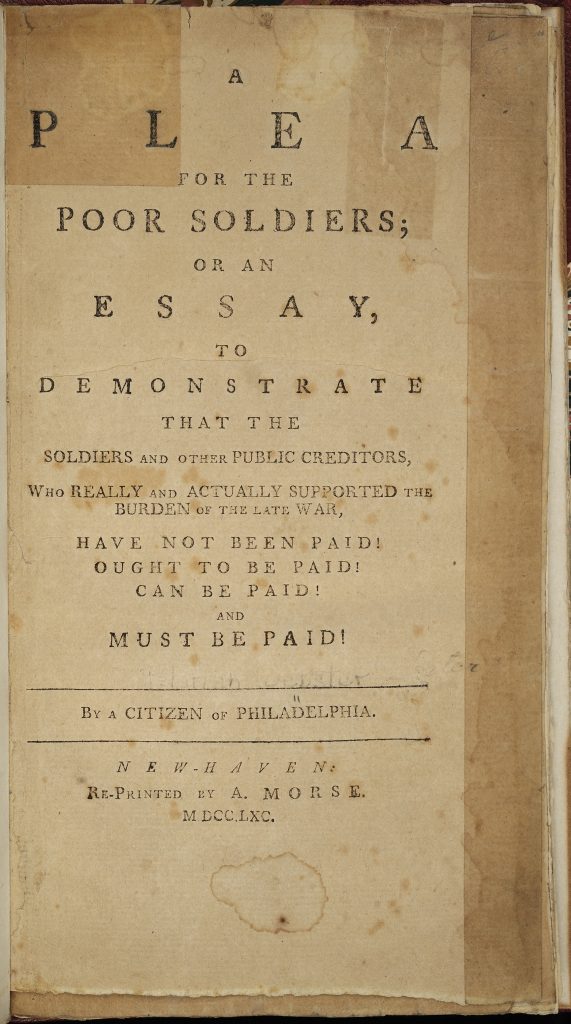
A Plea for the Poor Soldiers; or An Essay, to Demonstrate that the Soldiers and Other Public Creditors Who Really and Actually Supported the Burden of the Late War, Have Not Been Paid! Ought to be Paid! Can be Paid! And Must be Paid!
New-Haven: Re-printed by A. Morse, 1790The Society of the Cincinnati, The Robert Charles Lawrence Fergusson Collection
title page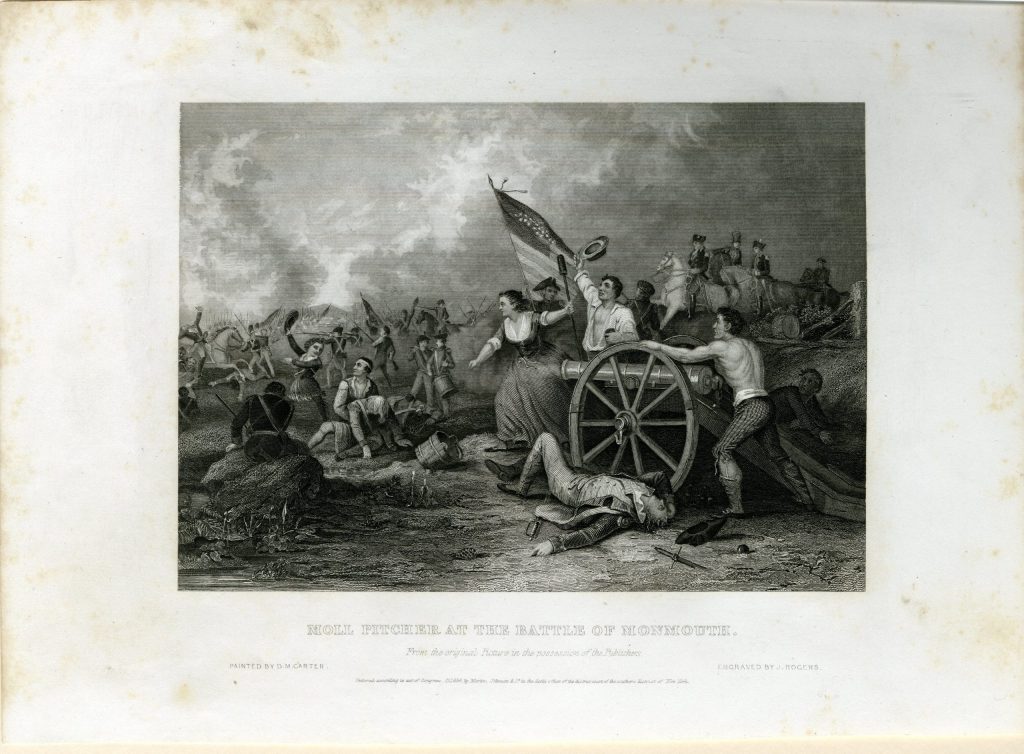
painted by D.M. Carter; engraved by John Rogers
New York: Martin, Johnson & Co., 1856
The Society of the Cincinnati
Battle scene with Molly Pitcher in the center assisting two solders fire a cannon next to an officer who lies mortally wounded. In the background to the right are a group of officers on horseback, the first of which appears to be George Washington.
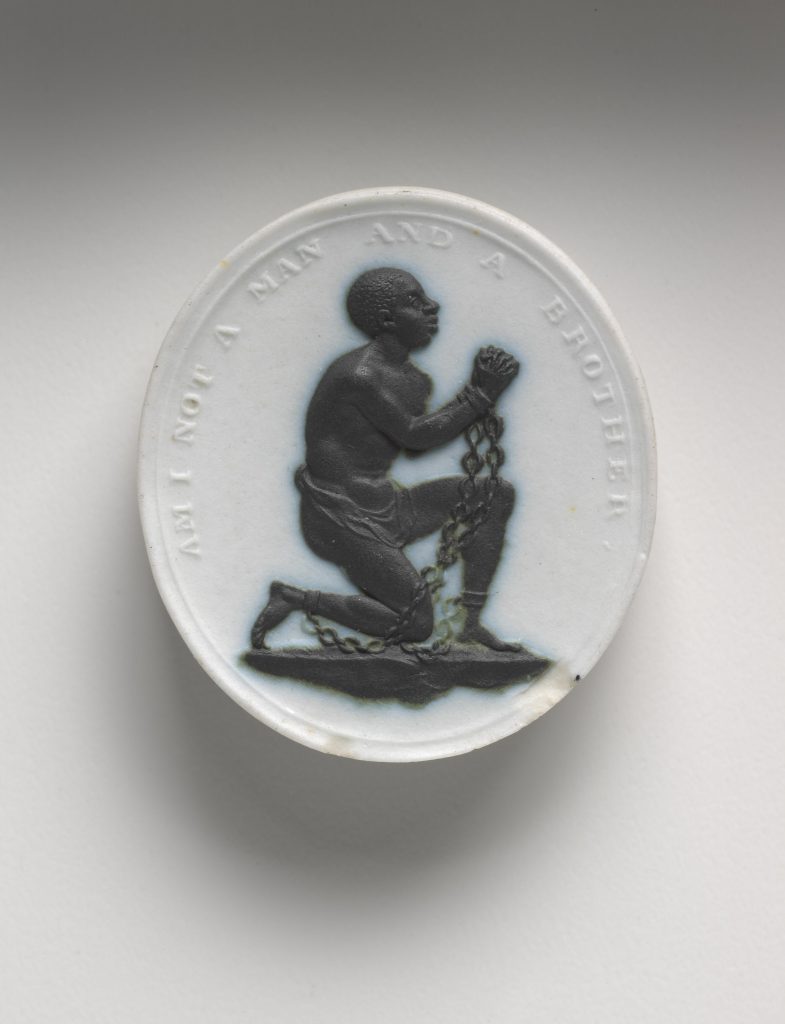
Anti-Slavery Medallion, Am I Not A Man and A Brother
Henry Webber, artist; Struck in Great Britain
1787The Diplomatic Reception Rooms, U.S. Department of State
This anti-slavery medallion was produced as part of the late 18th century abolitionist movement in Western Europe and America. Many abolitionists wore these medallions to clearly state their position and start conversations about slavery. These small porcelain and ceramic medallions were designed and produced by a team of craftsmen led by British potter Josiah Wedgwood. Over time, the medallions’ popularity grew, and the image appeared on a variety of objects, including chinaware, cufflinks, and pamphlets distributed by and among the activists.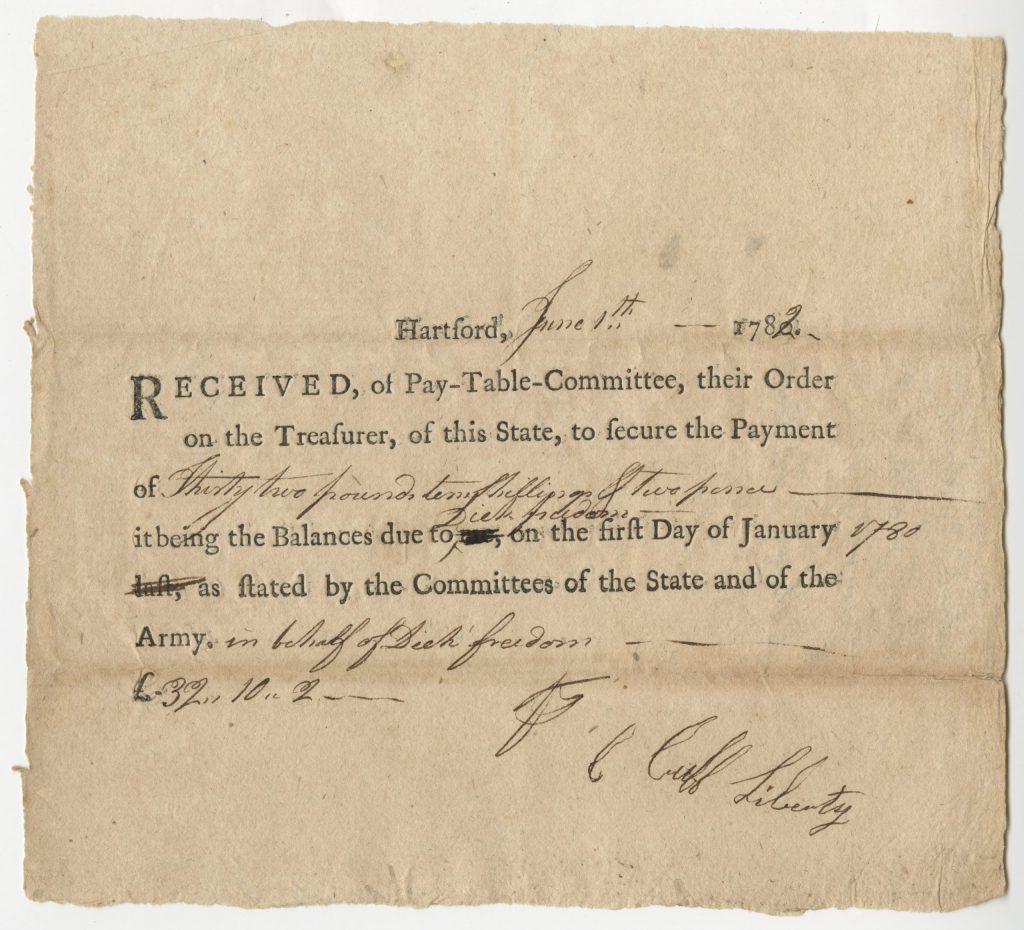
Partially printed D.S., Hartford, June 7th 1782: receipt of Pay-Table-Committee
Cuff Liberty, Dick Freedom, Committee of the Pay Table; Connecticut. Treasury Dept.
1782The Society of the Cincinnati, The Robert Charles Lawrence Fergusson Collection
Payment receipt signed for Dick Freedom by Cuff Liberty. Dick Freedom and Cuff Liberty were African American participants in the Revolutionary War who adopted aspirational names during their service. They served in the all-African American Second Company of the Fourth Connecticut Regiment.download pdf version of presentation
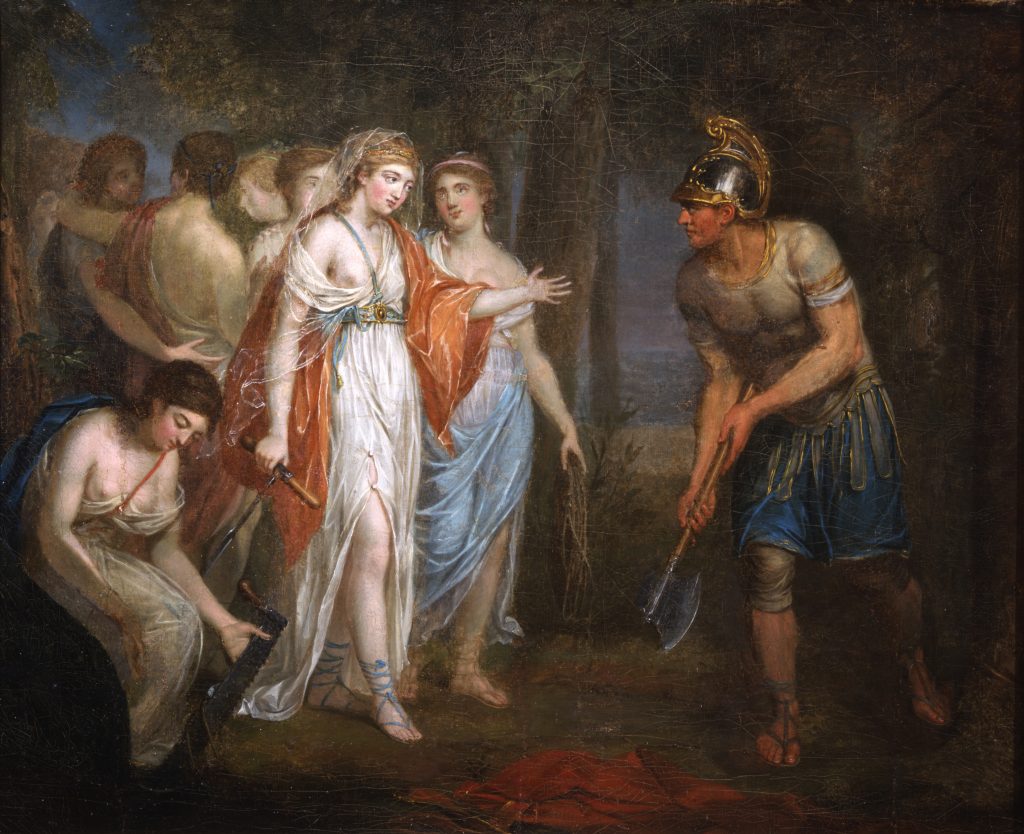
![Click for a larger view. Society_Cincinnati_Exteriors_167[1755]](https://www.americanrevolutioninstitute.org/wp-content/uploads/2020/07/Society_Cincinnati_Exteriors_1671755-683x1024.jpg)
